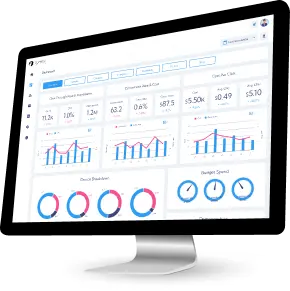In the evolving landscape of digital marketing, the introduction of marketing collaboration software represents a paradigm shift in how marketing strategies are conceptualized, executed, and monitored. Xamtac Consulting, at the forefront of this innovation, offers a unique AI-driven platform tailored to each company's brand style, voice, and specific needs. This software ecosystem blends advanced AI with a comprehensive suite of tools, enhancing the efficiency and effectiveness of marketing campaigns across multiple channels.
Marketing collaboration software is a multifaceted technology solution designed to facilitate streamlined cooperation among marketing teams. At its essence, it integrates various marketing collaboration tools into a single, cohesive platform. This integration enables teams to manage projects, share resources, and track progress efficiently, making it an indispensable tool in the competitive field of digital marketing.
These platforms are designed to cater to a range of needs, from simple marketing collaboration tools ideal for small teams to sophisticated collaboration software for extensive marketing departments. Features like task assignments, file sharing, real-time editing, and communication channels are harmoniously integrated, ensuring a seamless user experience.

Xamtac's Role and Innovation
Xamtac Consulting, headquartered in Chicago, leverages this technology to provide personalized solutions. Their platform is not just a collection of tools; it's an AI-driven ecosystem that learns and adapts to a brand's voice and goals, ensuring high-quality asset generation and effective marketing planning. The platform's ability to streamline multi-channel campaigns, enhance asset management, and provide insightful analytics gives marketing teams a comprehensive experience, catering to their unique requirements.
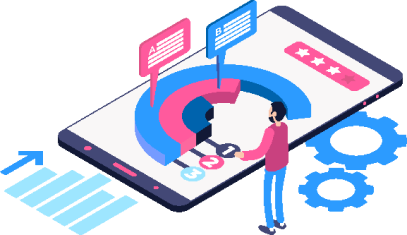
Importance in the Modern Marketing Landscape
In today's rapidly changing marketing environment, agility and coordinated efforts are more crucial than ever. Marketing collaboration platforms address this need by offering an integrated environment for brainstorming, planning, executing, and analyzing marketing campaigns. They facilitate seamless collaboration within teams and with external stakeholders, ensuring alignment with marketing objectives and strategies. This level of integration is vital for developing campaigns that are not only creative but also targeted and effective.
Integration of technology and collaboration is key. The study "Getting IT to work for marketing: Exploring collaboration between marketing and IT functions for the delivery of marketing innovation" highlights this, stating, "The success of marketing automation projects can be improved by dealing explicitly with interpretative barriers to collaboration." This insight is particularly relevant to Xamtac's strategy, where the merging of AI technology with marketing expertise creates a powerful synergy. By addressing these interpretative barriers, Xamtac ensures that its AI-driven platform not only meets but exceeds the evolving demands of digital marketing.
Additionally, the critical relationship between sales and marketing teams is explored in another study, "Exploring collaboration between sales and marketing." It points out, "There is a positive correlation between collaboration between sales and marketing, and improved business performance." This finding underscores the importance of Xamtac's platform in facilitating effective communication and collaboration between these key departments. By aligning sales and marketing efforts, Xamtac's software ecosystem enhances the overall impact and efficiency of marketing campaigns.
Integrating insights from these studies, Xamtac's platform stands out as a sophisticated tool in the digital marketing landscape. It's not just about providing technology; it's about embedding strategic insights into the fabric of marketing processes. This approach ensures that Xamtac's clients are equipped not just with cutting-edge tools but also with a deeper understanding of the principles that drive successful marketing collaboration.
As we appreciate the advanced capabilities of platforms like Xamtac, it's insightful to look back at the evolution of marketing collaboration software. Understanding this history helps us recognize the significant strides made in this technology and how it has shaped current marketing strategies and collaborations.
History of Marketing Collaboration
Software The history of collaboration software, particularly in the marketing domain, is a fascinating journey through technological evolution and changing business needs. Spanning over 30 years, this history begins with the inception of groupware in the 1980s and stretches to the sophisticated platforms we see today.
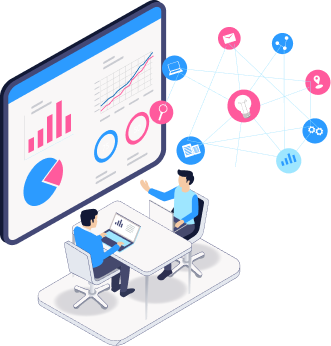
The Advent of Groupware in the 1980s
The concept of collaboration software emerged in the 1980s with the development of groupware, a term describing software designed to help teams work together more effectively. One of the earliest and most notable examples was Lotus Notes. This pioneering software provided a platform for internal communication and document sharing, laying the groundwork for future collaboration tools. Lotus Notes was revolutionary in its time, offering businesses a new way to manage team interactions and share information. It was more than just an email client; it was a comprehensive tool for managing workflows, documents, and communications within teams.

The Dot Com Boom and the Rise of Web-Based Collaboration Tools
The dot com boom of the late 1990s and early 2000s marked a significant milestone in the evolution of collaboration software. This period saw the introduction of tools like WebEx, which brought new capabilities to the workplace, including online conferencing and remote collaboration. The rise of the internet also saw the development of early intranet and extranet software, which further facilitated internal and external collaboration for businesses.
The introduction of these web-based tools signified a shift from standalone software to more integrated, networked solutions. This change allowed for more dynamic collaboration, enabling teams to work together in real-time, regardless of their physical location.
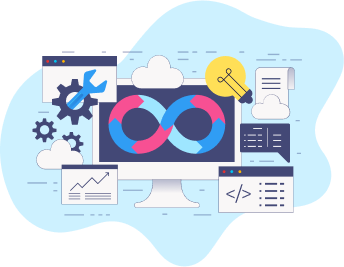
Web 2.0 and Social Interactivity in Collaboration
With the advent of Web 2.0 in the 2000s, collaboration software took a more social turn, integrating levels of interactivity that were previously unseen. This era brought about platforms that emphasized user-generated content, social networking, and community-driven collaboration.
This period also saw the introduction of Microsoft SharePoint, a significant development that made collaboration a mainstream IT concern. SharePoint provided a robust platform for document management and collaboration, integrating seamlessly with other Microsoft Office products. Its launch represented a move towards more sophisticated, enterprise-level collaboration solutions.

Three Types of Collaboration Software
Over these decades, collaboration software evolved into three distinct types, each serving different aspects of teamwork
Communication
Early groupware like Lotus Notes focused on communication, offering tools for internal messaging and information sharing.
Conferencing
Tools such as WebEx emphasized conferencing, enabling real-time collaboration with a focus on visual and audio communication. This type of software typically supported a presenter-led model, where one person controlled the shared view while others contributed via voice or chat.
Coordination
Emerging last but growing rapidly, coordination software addressed the need to manage complex, interdependent tasks towards a shared goal. These tools brought project and task management to the forefront, facilitating detailed planning and execution of collaborative efforts.
Each of these types of software addressed different needs within a team or organization, often overlapping in functionality to provide a comprehensive collaboration experience.
The evolution of marketing collaboration software reflects the changing dynamics of the workplace and the growing complexity of marketing tasks. From the basic communication and document-sharing capabilities of the 1980s to the sophisticated, integrated platforms of today, collaboration software has continually adapted to meet the needs of evolving marketing strategies and teams.
Integration of Multiple Collaboration Types
The development of collaboration software entered a new phase with the integration of the three types of collaboration - communication, conferencing, and coordination. This integration addressed the multifaceted requirements of marketing teams. For instance, a marketing team might use communication tools for discussing initiatives, conferencing tools for brainstorming sessions, and coordination tools for managing action items and deliverables.
The emergence of platforms that combined these functionalities into a seamless whole represented a significant leap forward. These integrated solutions allowed teams to switch effortlessly between different modes of collaboration, enhancing efficiency and effectiveness.
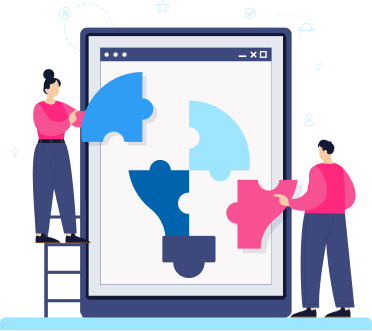
Xamtac and the Integrated Collaboration Model
An example of this integrated approach is Xamtac, which offered a blend of communication, conferencing, and coordination tools. Teams could communicate via web-based IM/chat, share documents and content, and engage in teleconferencing for real-time collaboration. This platform also provided a comprehensive suite of coordination tools, from project and task management to high-level management reporting, streamlining the workflow and decision-making processes.
This integrated model became a template for modern collaboration software, offering a one-stop solution for the diverse needs of marketing teams.

The Shift Towards Customization and Flexibility
As collaboration software matured, the focus shifted towards customization and flexibility. Businesses sought tools that could adapt to their unique workflows and processes. The one-size-fits-all approach gave way to customizable platforms, where features could be tailored to fit the specific needs of a team or project.
This era saw the rise of software-as-a-service (SaaS) models, which allowed companies to use collaboration software without the need for extensive internal IT infrastructure. SaaS platforms offered scalability, with the ability to add or remove features and users as needed, making collaboration tools accessible to businesses of all sizes.

The Role of Mobile and Cloud Technologies
The widespread adoption of mobile devices and cloud computing had a profound impact on collaboration software. Mobile accessibility became crucial, allowing team members to collaborate from anywhere, at any time. Cloud-based platforms ensured that data was accessible and synchronizable across devices, further enhancing the flexibility and reach of collaboration tools.
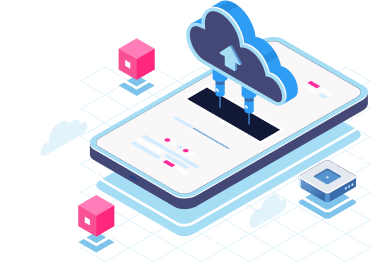
The Current Landscape and Future Trends
Today, marketing collaboration software is characterized by its versatility, user-friendliness, and integration capabilities. It plays a critical role in enabling marketing teams to manage complex, multi-channel campaigns efficiently. The future trends in this field include the increasing use of AI and machine learning to automate and optimize various aspects of collaboration and marketing.
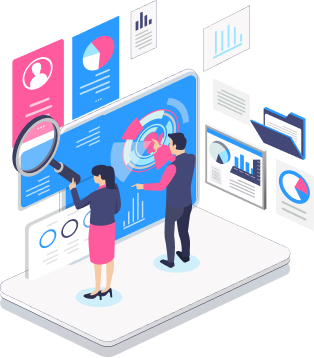
AI technologies are being integrated to provide predictive analytics, automated task management, and personalized user experiences. The focus is also shifting towards more immersive and interactive collaboration experiences, possibly leveraging augmented reality (AR) and virtual reality (VR) technologies.
As we delve into the current landscape of marketing collaboration software, shaped by years of technological advancements and changing business needs, we can categorize these tools into two primary types: comprehensive platforms and specialized tools. This distinction is vital for understanding how different solutions cater to various aspects of marketing collaboration in today's digital era.
Comprehensive Platforms vs. Specialized Tools
In the realm of marketing collaboration, software solutions can be broadly categorized into two types: comprehensive platforms and specialized tools. Understanding the distinction and applications of each is crucial for businesses looking to enhance their marketing efforts.
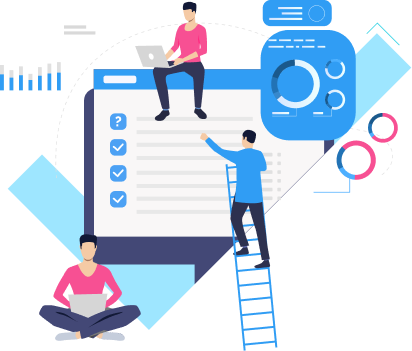
Comprehensive Platforms
These are all-encompassing solutions designed to cater to multiple aspects of marketing collaboration. They offer a wide range of functionalities, from project management and real-time communication to data analytics and asset management, all within a single interface. Such platforms are ideal for organizations looking for a unified system to manage various marketing activities.
The key advantage of comprehensive platforms lies in their integrative nature. They eliminate the need for multiple, disjointed tools, thereby reducing complexity and streamlining processes. Teams can collaborate more efficiently, as all necessary tools and data are accessible in one place. This integration often leads to better alignment among team members, clearer communication, and more cohesive campaign planning and execution.
However, these platforms can be somewhat overwhelming due to their extensive feature sets. They may require a steeper learning curve and might include functionalities that a particular team may never use.
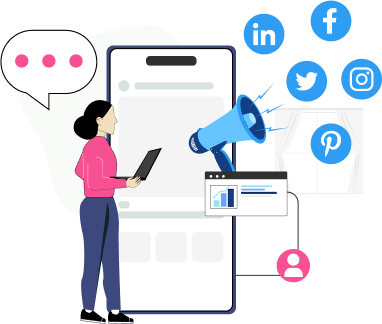
Specialized Tools
On the other hand, specialized tools focus on specific aspects of marketing collaboration. For instance, some tools are dedicated solely to social media management, while others might specialize in email marketing or content creation. These tools are designed to offer deeper functionality in their niche areas.
Specialized tools are ideal for teams that require advanced features in a particular domain. They allow for a more focused approach to specific tasks and often provide more in-depth analytics and customization options within their area of expertise.
The downside to using specialized tools is the potential for fragmentation. Teams may find themselves juggling multiple platforms, leading to disjointed workflows and communication challenges. This fragmentation can also make it harder to get a unified view of marketing efforts and results.

Choosing the Right Type
Deciding between comprehensive platforms and specialized tools depends on several factors, including the size of the team, the complexity of marketing campaigns, and the specific needs of the organization. Larger teams with diverse marketing activities might benefit more from comprehensive platforms, while smaller teams or those with a focused marketing strategy might find specialized tools more effective.
The choice between comprehensive platforms and specialized tools in marketing collaboration software hinges on striking a balance between breadth and depth. While comprehensive platforms offer a bird's-eye view and streamlined processes, specialized tools provide deep dives into specific marketing areas. The key is to assess the specific needs and goals of the marketing team and choose a solution that aligns with these objectives.
Benefits of Using Marketing Collaboration Software
Improved Team Productivity
The adoption of marketing collaboration software brings a host of benefits, chief among them being enhanced team productivity. This improvement stems from several key features of these platforms. No matter the industry even if you’re in the plumbing , automotive or even law industries.

Centralized Information
With a single repository for all marketing materials, team members spend less time searching for documents and more time on productive tasks. Centralization ensures that everyone has access to the latest information, reducing redundancies and errors.
Streamlined Communication
Effective communication tools within these platforms facilitate faster decision-making and clearer exchange of ideas. Features like instant messaging, discussion forums, and comment threads on documents allow for real-time feedback and collaboration, eliminating the delays often associated with emails or physical meetings.
Task Management
Marketing collaboration software typically includes task management tools that allow for the efficient delegation, tracking, and completion of tasks. This clarity in responsibilities and deadlines keeps teams focused and aligned, directly contributing to increased productivity.
Enhanced Communication and Coordination
Effective communication and coordination are vital in any marketing effort. Marketing collaboration software excels in this area by providing platforms where teams can interact seamlessly, regardless of their physical location.
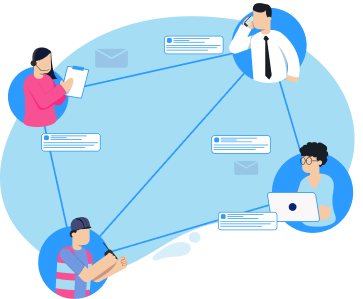
Unified Communication Channels
These platforms often feature integrated communication tools, such as video conferencing, chat applications, and email systems. This integration ensures that all team members can communicate through a single, unified channel, enhancing the overall coordination.
Collaboration in Real-Time
The ability to work on documents and projects simultaneously allows for a more dynamic and interactive collaboration. Team members can see changes and contributions in real-time, fostering a more collaborative and inclusive working environment.
Visibility and Transparency
With features like shared calendars, project timelines, and progress trackers, everyone in the team has visibility into what others are working on. This transparency is crucial for coordinating efforts and avoiding overlaps or gaps in the marketing strategy.
Streamlined Workflow Management
The streamlined workflow is another significant benefit of using marketing collaboration software. These systems are designed to simplify and automate various aspects of marketing

Automated Workflows
Many platforms offer the ability to automate repetitive tasks, such as social media postings or email campaigns. Automation saves time and reduces the likelihood of human error.
Customizable Workflow
Marketing teams can customize the workflows according to their specific processes and preferences. This flexibility allows teams to create a workflow that best fits their way of working, rather than having to adapt to a rigid system.
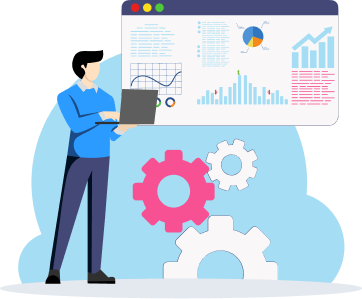
Data-Driven Decision Making
In today’s data-centric world, making informed decisions based on accurate data is crucial. Marketing collaboration software often includes analytics tools that provide valuable insights into marketing campaigns.
Comprehensive Analytics
From tracking website traffic to monitoring social media engagement, these platforms offer a range of analytics tools. This data helps in understanding the effectiveness of marketing strategies and making informed decisions.
Real-Time Reporting
The ability to generate real-time reports means that teams can quickly assess and adjust their strategies, ensuring that they remain aligned with their marketing goals.
The benefits of using marketing collaboration software are multifaceted. From improving team productivity and enhancing communication to streamlining workflow management and enabling data-driven decision-making, these platforms are invaluable assets in the arsenal of modern marketing teams.
Challenges in Marketing Collaboration
While marketing collaboration software offers numerous benefits, it's important to acknowledge the challenges that can arise in collaborative marketing efforts. Understanding these challenges is the first step in addressing them effectively.

Resistance to Change
One of the most common challenges is resistance to adopting new technologies. Team members may be comfortable with traditional methods and hesitant to learn new systems. This resistance can hinder the effective implementation of collaboration software.
Integration with Existing Systems
Integrating new collaboration software with existing tools and systems can be a complex process. Ensuring compatibility and smooth data transfer is crucial to maintain continuity and efficiency.
Communication Barriers
Despite the advanced communication tools provided by collaboration software, misunderstandings and miscommunications can still occur, especially in teams that are spread across different locations and time zones.
Information Overload
With the vast amount of information shared on collaboration platforms, team members can sometimes feel overwhelmed. Managing and organizing this information in a way that it remains accessible but not overwhelming is a challenge.
Security Concerns
The sharing of sensitive marketing data on collaboration platforms raises concerns about data security and privacy. Ensuring that the software has robust security measures is paramount to protect company and client information.
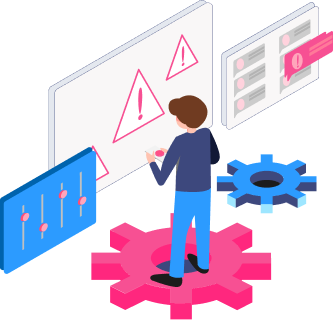
Addressing Common Obstacles and How Software Helps
Addressing common obstacles is streamlined through software solutions. From enhancing communication to automating tasks, software optimizes processes in various sectors. Its adaptability empowers users in healthcare, education, and business, offering efficient tools to navigate challenges and improve productivity, fostering success in a rapidly evolving environment.
Ease of Adoption
To counter resistance to change, many collaboration software solutions are designed with user-friendly interfaces and intuitive functionalities. Offering training sessions and resources can also ease the transition.
Customizable Integration
Many collaboration platforms offer customizable options for integration, allowing them to seamlessly blend with existing systems and workflows, thereby reducing disruption.
Enhanced Communication Features
Tools like real-time chat, video conferencing, and collaborative editing help bridge communication gaps. They provide a platform for more immediate and clear interaction, crucial for remote or geographically diverse teams.
Effective Information Management
Collaboration software typically includes features for organizing information, such as file tagging, categorization, and searchable databases. These features help in managing the flow of information and preventing overload.
Robust Security Measures
To address security concerns, most collaboration software comes equipped with advanced security features, including encryption, access controls, and regular security updates.
While there are challenges in marketing collaboration, the right software can play a crucial role in addressing these issues. By understanding the common obstacles and utilizing the tools and features of collaboration software, marketing teams can overcome these challenges and harness the full potential of collaborative marketing efforts.
The effectiveness of collaboration between sales and marketing departments is not only about improving communication but also involves broader organizational aspects. As the study "Does Collaboration Between Sales and Marketing Affect Business Performance?" points out, factors such as "a positive senior management attitude toward collaboration between sales and marketing, the reduction of interdepartmental conflict, the improvement of communications, the establishment of organizational learning, and effective market intelligence systems are important antecedents to effective collaboration between sales and marketing." This highlights that while tools like Xamtac's software facilitate tactical collaboration, strategic organizational alignment is equally crucial. The study's insights resonate with the philosophy behind marketing collaboration software, emphasizing the need for an integrated approach that combines technology with positive organizational culture and clear communication channels. By fostering this holistic environment, businesses can leverage the full potential of their marketing and sales teams, driving not just operational efficiency but also contributing to overall business performance.
While acknowledging these challenges is crucial, the next logical step is to focus on how the right choice of marketing collaboration software can serve as a solution to these obstacles. The effectiveness of any marketing team heavily relies on the tools at their disposal. Choosing the right software is not just about overcoming these challenges; it's a strategic decision that shapes the efficiency, creativity, and success of marketing initiatives.
Selecting the Right Marketing Tool
In the dynamic world of digital marketing, the adage 'a team is only as strong as its tools' holds undeniable truth. Selecting the right marketing collaboration software isn't just a matter of convenience; it's a strategic decision that can significantly impact the efficiency, creativity, and overall success of your marketing initiatives. The right software acts as the backbone of your marketing team, providing a platform for seamless collaboration, streamlined workflows, and effective communication.

The importance of choosing the right marketing collaboration software cannot be overstated. In a landscape where marketing campaigns are becoming increasingly complex and multifaceted, having a tool that can keep up with your team's pace and creativity is crucial. The right software should not only accommodate your current marketing strategies but should also be flexible enough to adapt to future trends and changes in the industry.
Moreover, the alignment of software with your marketing objectives and team dynamics is a critical factor to consider. Each marketing team has its unique set of goals, challenges, and workflows. The ideal collaboration software should resonate with these elements, enhancing your team's ability to execute campaigns efficiently and effectively. It should serve as a catalyst for creativity, allowing team members to share ideas, feedback, and insights in real-time, fostering an environment of continuous improvement and innovation.
Understanding Your Team's Specific Needs
Assessing the Size of Your Team: Scalability and Feature Requirements
When it comes to marketing collaboration software, one size does not fit all. The size of your team plays a pivotal role in determining the type of software that will best suit your needs. For small teams, software that offers simplicity, ease of use, and basic collaboration features may be sufficient. Smaller teams often require software that provides straightforward communication and project management tools without the complexity of advanced features that they may not use.
On the other hand, large marketing departments have a different set of requirements. These teams require software that can handle a higher volume of projects, more complex workflows, and a greater degree of collaboration. Scalability is a key factor for large teams. As your marketing efforts grow and evolve, your software should be able to scale accordingly. This means having the capacity to support more users, larger datasets, and more intricate campaign management features.

Additionally, larger teams often work on multiple campaigns simultaneously, necessitating software that can manage multiple projects efficiently, allowing for easy tracking and reporting on each campaign's progress. Features like advanced task delegation, workflow automation, and integrated analytics become crucial for large teams to maintain productivity and monitor campaign performance effectively.
Considerations for Small Teams versus Large Marketing Departments
For small teams, the focus should be on software that promotes flexibility and agility. These teams need tools that allow them to move quickly, adapt to changes, and communicate effectively without being bogged down by overly complex features or cumbersome processes. The ideal software for small teams should be intuitive and require minimal training, enabling team members to start using it effectively right from the outset.
In contrast, large marketing departments require a more robust set of features. This includes advanced collaboration tools that enable seamless communication across different departments and external stakeholders, comprehensive project management capabilities, and extensive integrations with other marketing tools and platforms. Large teams also benefit from features like customizable dashboards and reports, which help in monitoring various metrics and KPIs relevant to large-scale campaigns.

Understanding Your Team's Specific Needs: Diverse Roles and Responsibilities
Tailoring Software Choices to Accommodate Various Roles within a Marketing Team. Marketing teams are often composed of individuals with diverse roles and expertise, ranging from creative designers and content writers to social media managers and SEO specialists. Each of these roles has unique requirements and contributions to the overall marketing strategy, making it essential for the chosen collaboration software to cater to these varied needs.
For creative designers, the software should offer visual project management tools and easy integration with design software. This enables them to share designs, receive feedback, and make revisions efficiently. Content writers, on the other hand, benefit from features that facilitate content planning, collaboration on document editing, and seamless content workflow management.

Social media managers require tools that allow for scheduling posts, monitoring social media engagement, and collaborating with team members on social media strategies. Similarly, SEO specialists need software that integrates with SEO tools, enabling them to track keyword rankings, analyze website traffic, and collaborate on SEO strategies.
The Importance of Customizable Features and User Access Levels
Customization is a key aspect of marketing collaboration software, especially in teams with diverse roles. The ability to customize the software based on individual and team needs ensures that each member can work efficiently in their area of expertise. Customizable dashboards, for instance, allow team members to focus on the metrics and tasks that are most relevant to their role, improving productivity and focus.
User access levels are equally important in a collaborative environment. Not every team member needs access to all features and information. The software should allow for the creation of different access levels, ensuring that team members have the necessary permissions to perform their roles effectively, without overwhelming them with irrelevant features or data.

Customization is a key aspect of marketing collaboration software, especially in teams with diverse roles. The ability to customize the software based on individual and team needs ensures that each member can work efficiently in their area of expertise. Customizable dashboards, for instance, allow team members to focus on the metrics and tasks that are most relevant to their role, improving productivity and focus.
User access levels are equally important in a collaborative environment. Not every team member needs access to all features and information. The software should allow for the creation of different access levels, ensuring that team members have the necessary permissions to perform their roles effectively, without overwhelming them with irrelevant features or data.
Collaboration and Communication Tools: The Heart of Effective Marketing

Real-Time Communication for Dynamic Marketing Teams
In the realm of digital marketing, time is of the essence. Recognizing this, our marketing collaboration tools are designed for instant communication. Whether it's brainstorming over the next big campaign or coordinating a multi-channel strategy, our platform ensures that every voice is heard in real-time.
Our collaboration software for marketing teams supports various communication channels - from instant messaging to video conferencing, ensuring that your team stays connected, regardless of their location.

Intuitive Collaboration for Peak Performance
Collaboration is more than just communication; it's about working together seamlessly. Our collaboration tools marketing team members use are integrated with task management features, allowing for easy assignment, tracking, and completion of tasks. This streamlined approach ensures that everyone is on the same page, driving your projects towards success.

Enhanced Collaboration through Shared Resources
A key feature of our collaborative marketing platform is the shared workspace. Here, team members can co-create, share documents, and provide feedback all in one place. This centralized hub of activity fosters a more cohesive and efficient working environment.
Integration Capabilities: Streamlining Your Marketing Ecosystem
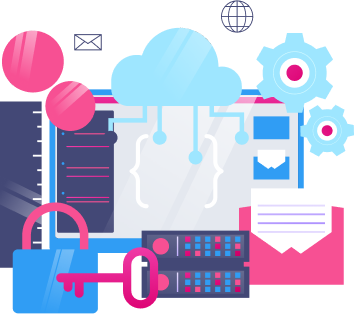
Seamless Integration with Existing Tools
Xamtac’s marketing collaboration platform is designed to be a part of your existing marketing ecosystem. It seamlessly integrates with popular CRM systems, email marketing tools, social media marketing tools, and more. This integration ensures that you can leverage the full potential of your marketing arsenal without the hassle of juggling multiple platforms.

Unifying Your Marketing Efforts
With our marketing collaboration tool, disparate elements of your marketing strategy come together. Whether it's aligning your AI tools for marketing with your content strategy or synchronizing your email campaigns with social media efforts, our platform acts as a unifying force, enabling a more cohesive approach to digital marketing.
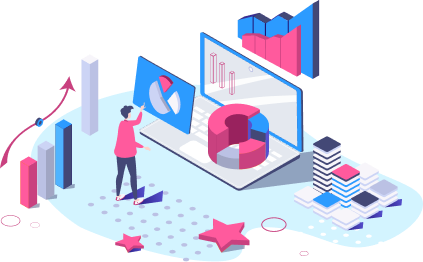
Custom Integrations for Specialized Needs
Every marketing team has its unique set of tools and processes. Our collaboration tool for marketing is adaptable, allowing for custom integrations. This flexibility means that whatever your team's specific needs might be, our platform can accommodate and enhance them.
Usability and User Experience: Simplifying Marketing Collaboration
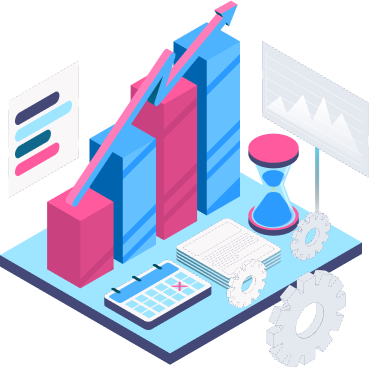
Intuitive Interface for Enhanced Productivity
At the heart of Xamtac's marketing collaboration software is an intuitive interface designed for ease of use. This user-friendly design ensures that team members can navigate through the platform effortlessly, irrespective of their technical expertise. It's about reducing the learning curve and enhancing productivity from the get-go.

Training and Support for Your Team
Understanding that new tools can be challenging, we provide comprehensive training and support for our marketing collaboration tools. This includes personalized training sessions, detailed resource guides, and a responsive support team. Our goal is to ensure that your team feels confident and competent in utilizing every feature of our platform.
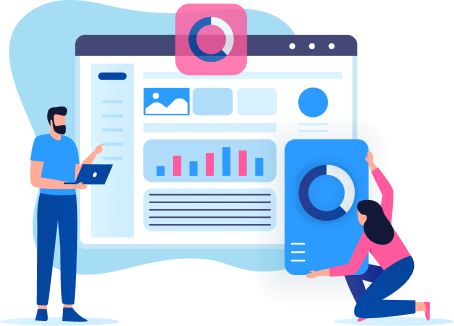
Customizable Dashboards for Personalized Experience
The Xamtac collaboration tool marketing teams use offers customizable dashboards. This means that each member can tailor the interface to their specific needs, ensuring that they have quick access to the tools and information most relevant to them. It's about creating a personal workspace within the collaborative environment.
Analytics and Reporting: Gaining Insights into Marketing Performance
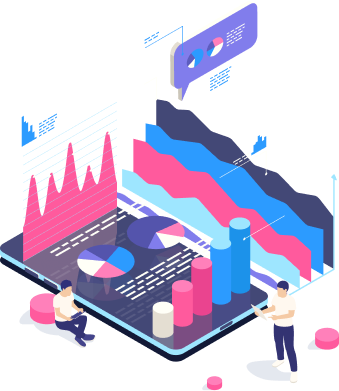
Advanced Analytics for Strategic Decisions
Data-driven decision-making is pivotal in modern marketing strategies. Our marketing collaboration platform includes advanced analytics features, providing deep insights into campaign performance. With these analytics at your fingertips, strategizing becomes more about leveraging data for informed decisions.
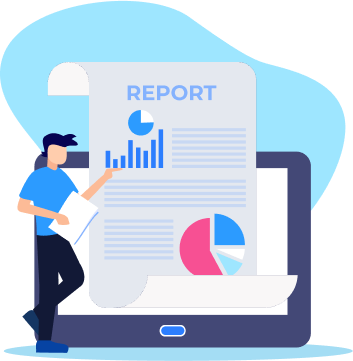
Customizable Reporting for Meaningful Insights
We understand that each marketing team has unique reporting needs. That's why our marketing analytics tools are fully customizable. Whether you need a high-level overview or a deep dive into specific metrics, our reporting tools are designed to deliver insights in the most effective way for your team.

Real-time Data for Immediate Adjustments
The marketing landscape is ever-changing, and agility is key. Our platform provides real-time data, allowing you to make immediate adjustments to your campaigns. This responsiveness ensures that your strategies remain effective and relevant, adapting to the dynamic digital marketing environment.
Security and Data Protection: Safeguarding Your Marketing Assets

Robust Security for Peace of Mind
In a world where data breaches are increasingly common, security cannot be an afterthought. Our marketing collaboration tool comes equipped with robust security measures. This includes data encryption, secure access controls, and regular security audits, ensuring that your sensitive marketing data is always protected.

Compliance with Global Data Protection Regulations
As a leading digital marketing company, Xamtac Consulting adheres to global data protection standards. Our collaborative marketing platform is compliant with regulations like GDPR, giving you the confidence that your marketing activities align with legal requirements.

Regular Updates and Maintenance for Continued Security
The digital landscape is constantly evolving, and so are security threats. We ensure that our collaboration tool for marketing is regularly updated with the latest security measures. Our dedicated team monitors and maintains the platform, ensuring that your marketing efforts are backed by a secure and reliable system.
Enhancing Collaboration with AI and Social Media Integration
Leveraging AI for Marketing Efficiency
Artificial Intelligence (AI) has revolutionized many aspects of digital marketing. Our marketing collaboration software integrates AI tools to streamline processes, from predictive analytics to automated responses. This integration not only saves time but also provides strategic insights that can propel your marketing efforts to new heights.
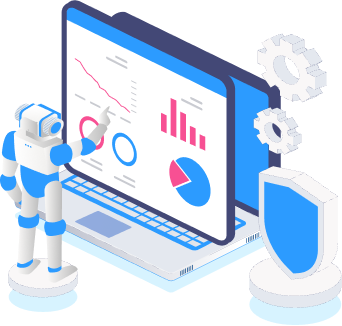
Social Media Tools Integration for Broader Reach
In today's digital age, social media is a vital component of any marketing strategy. Our social media marketing tools are integrated into the collaboration platform, allowing for seamless management of social media campaigns. This ensures that your team can effectively plan, execute, and monitor social media activities directly from our unified platform.

Real-Time Collaboration on Social Media Strategies
The fast-paced nature of social media requires teams to be agile and responsive. Our collaboration tools marketing team members use allow for real-time collaboration on social media strategies, ensuring that your campaigns are timely, cohesive, and aligned with overall marketing objectives.

Streamlining Email Marketing through Integrated Tools
Unified Email Marketing Management
Email marketing remains a crucial element of comprehensive marketing strategies. Our platform includes integrated email marketing tools that simplify the creation, distribution, and analysis of email campaigns. This unified approach ensures consistency in messaging and maximizes the impact of your email marketing efforts.
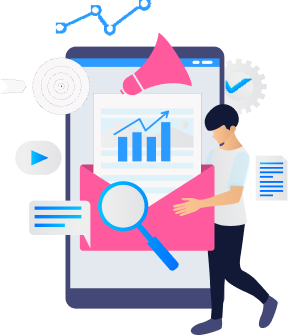
Personalization and Targeting with Advanced Tools
Personalization is key in making email marketing effective. Our tools provide advanced targeting and segmentation capabilities, allowing you to tailor your messages to specific audience segments. This personalization leads to higher engagement rates and a better return on investment.
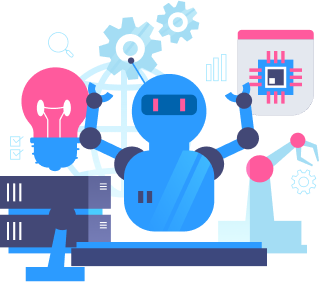
Analyzing Email Campaigns for Continuous Improvement
Continuous improvement is essential in marketing. Our platform's analytics capabilities extend to email campaigns, providing detailed insights into open rates, click-through rates, and conversion metrics. These analytics help in fine-tuning your strategies for optimal performance.

Xamtac Consulting's Commitment to Superior Marketing Collaboration
We are dedicated to providing our clients with the most comprehensive and efficient marketing collaboration platform. Our tools are designed to not only facilitate collaboration but also to integrate seamlessly with your existing marketing strategies, be it through AI, social media, or email marketing. We understand that the right tools can make all the difference in achieving marketing success, and we are committed to being that difference for our clients.
As we explore the comprehensive suite of collaboration tools offered by Xamtac, designed to enhance team productivity and synergy, it becomes evident that these tools are just the beginning of a larger, more innovative journey in marketing. Xamtac’s platform not only facilitates efficient team collaboration but also sets the stage for an advanced, AI-driven approach to marketing, marking the next step in the evolution of digital marketing strategies.
The Future of Marketing: Your AI-Driven Partner
Welcome to Xamtac – where your marketing efforts are not just managed but masterfully orchestrated for maximum efficiency and impact. Our platform stands as a testament to innovation, meticulously engineered to transform your marketing strategy into a powerhouse of success. Xamtac is more than just a tool; it's an ecosystem that blends advanced AI with a robust suite of functionalities, each tailored to amplify the unique voice and style of your brand.
Imagine a world where multi-channel campaigns are not just managed but orchestrated with surgical precision, ensuring that your brand's message resonates across every touchpoint. With Xamtac, this becomes your reality. Our platform streamlines your campaigns across a multitude of channels, enhancing reach and impact in ways previously unimaginable.

In the heart of our ecosystem lies a unique AI, custom-built to align seamlessly with your brand. It's a dynamic entity, constantly learning and evolving with your brand's voice and objectives, ensuring that each campaign is a reflection of your brand's evolving narrative.
But that's not all. Xamtac's prowess extends to asset generation and organization, transforming the typically arduous task of creating and managing marketing materials into an effortless endeavor. Our comprehensive library system empowers you to generate, organize, and iterate on your marketing assets with ease, ensuring that everything you need for paid ads, emails, SEO, and social media is just a click away.
Dive into our sophisticated data integration tools, where your data sources, from analytics to CRM, converge to offer actionable insights and strategies. This integration empowers you to make informed decisions, leveraging the power of data to steer your marketing efforts in the right direction.
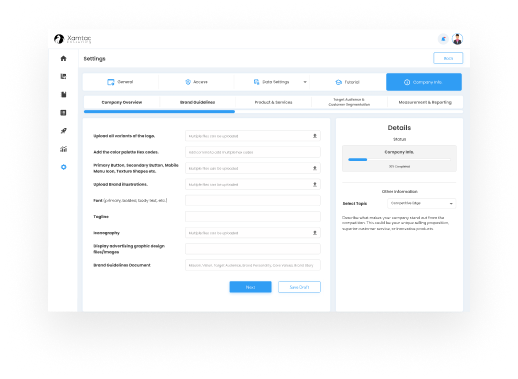
And when you're ready to bring your plans to life, Xamtac's robust marketing planning and launch tools come into play. Strategize and deploy coordinated campaigns across all channels from a single, unified dashboard, streamlining your workflow and maximizing your impact.
Personalized AI Empowering Your Brand's Digital Presence with Xamtac's Advanced AI
Xamtac's AI-driven approach is a game-changer in the realm of digital marketing. It's not just about automation; it's about intelligent, adaptive, and personalized strategies that resonate with your brand's unique identity. Here's a deeper dive into how our AI powers your marketing efforts
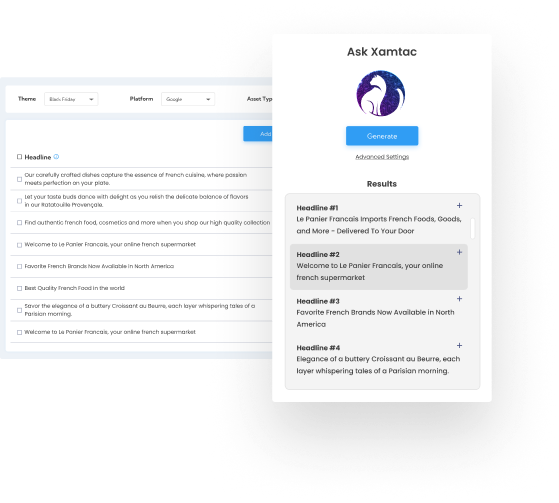
Adaptive Learning and Evolution
Xamtac's AI is a perpetual learner, constantly evolving and adapting to your brand's shifting landscape. It doesn't just respond to changes; it anticipates them, ensuring that your marketing strategies remain relevant and effective. This adaptive learning capability means that your marketing approach is always ahead of the curve, tailored to both current trends and future possibilities.
Seamless Brand Integration Across Platforms
Our AI doesn't just understand your brand; it embodies it. Whether it's creating content for social media, designing email campaigns, optimizing for search engines, or crafting paid advertisements, Xamtac's AI ensures that your brand's voice and aesthetic are seamlessly integrated across all platforms. This consistency fortifies your brand's identity, making it recognizable and reliable in the eyes of your audience.
Dynamic Content Creation and Personalization
In the digital age, content is king. Xamtac's AI excels in generating dynamic, engaging content that speaks directly to your audience. It's not just about catchy phrases or attractive visuals; it's about creating content that aligns with your audience's interests, preferences, and behaviors. This level of personalization makes your marketing efforts not just seen but felt, creating a deeper connection with your audience.
Predictive Analytics and Strategic Insights
What sets Xamtac's AI apart is its ability to harness data for predictive analytics. It analyzes patterns, predicts trends, and offers strategic insights that guide your decision-making process. This predictive prowess means you're not just reacting to the market; you're proactively shaping your marketing strategies based on data-driven forecasts.
Real-Time Optimization for Maximum Impact
In the fast-paced world of digital marketing, timing is everything. Xamtac's AI ensures that your campaigns are optimized in real-time, making adjustments for maximum impact. Whether it's tweaking a social media post for better engagement or adjusting an ad campaign for higher conversion rates, our AI ensures that your marketing efforts are always optimized for the best possible results.
With Xamtac's Personalized AI, you are not just deploying marketing campaigns; you are crafting a digital legacy. This AI-driven approach ensures that your brand not only stands out but also stands the test of time in an ever-evolving digital landscape.
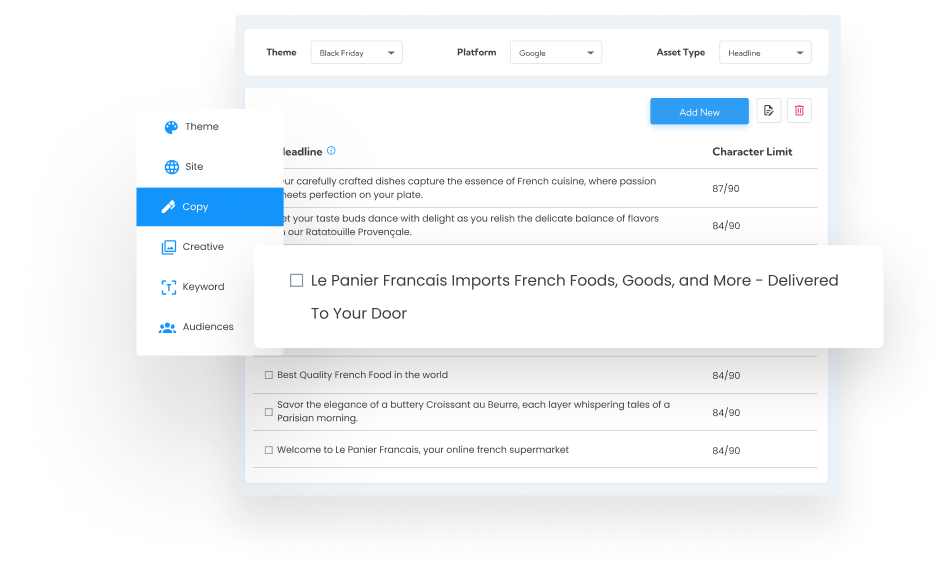
Xamtac Library Organization and Asset Generation
Xamtac's Asset Library is a marketer's dream, an expansive and dynamic repository where every facet of your marketing collateral is meticulously organized and easily accessible. This library is not just a storage space; it's an intelligent system designed to enhance creativity and streamline the asset management process across all customer touchpoints.
Thematic Organization and Accessibility
Within the library, assets are categorized by themes, allowing for a cohesive and consistent storytelling approach in your marketing campaigns. This thematic organization ensures that the right mood, tone, and style are conveyed, aligning with the overall brand narrative. Marketers can swiftly navigate through various themes, selecting and adapting assets that best fit their current campaign needs.
Landing Page and Website Content Management
The library extends its prowess to the digital forefront of your marketing - your landing pages and website content. It helps organize and optimize these crucial elements, ensuring they are not only visually compelling but also optimized for conversion and user engagement. The platform's capability to rapidly generate and update landing page elements and web copy keeps your online presence fresh and appealing.
Streamlined Copy Creation
Xamtac’s asset library includes a sophisticated system for managing and generating various forms of copy, from compelling headlines to detailed descriptions. This feature empowers marketers to produce copy that is not only brand-consistent but also tailored to the audience's preferences and behaviors, enhancing the effectiveness of the messaging.
Creative Asset Generation and Management
The heart of the library lies in its ability to manage and generate a wide range of creative assets. Whether it's images, videos, infographics, or other visual elements, the platform allows for quick generation and iteration, ensuring that your creatives are always fresh, relevant, and aligned with the latest marketing trends.
Email Marketing Optimization
Xamtac’s library also covers the crucial aspect of email marketing. It helps organize and create email content that resonates with your audience. From newsletter templates to promotional content, the system ensures that your email campaigns are effective, engaging, and seamlessly integrated with your overall marketing strategy.
Audience Segmentation and Personalization
A key feature of the library is its ability to organize and manage audience data. This enables precise segmentation and the creation of personalized marketing experiences. By understanding and categorizing audiences, Xamtac helps tailor marketing efforts to specific groups, increasing engagement and conversion rates.
Keyword and SEO Asset Management
In the realm of digital marketing, SEO is vital. The asset library includes tools for managing and optimizing keywords and other SEO-related assets. This ensures that your online content is not only user-friendly but also search engine optimized, driving organic traffic and enhancing online visibility.
Rapid Asset Generation for Customer Journey Touchpoints
Perhaps the most striking feature of Xamtac's library is its ability to rapidly generate assets for every touchpoint in the customer journey. From initial awareness through to conversion and retention, the platform ensures that each stage of the customer journey is supported with tailored, impactful marketing materials, creating a seamless and engaging experience for the customer.
Xamtac Data Integration and Analytics
Xamtac's data integration and PPC dashboard platform is a powerhouse of insights, designed to harness the vast landscape of data sources and transform them into a strategic asset. This system is not just about collecting data; it's about making data work for you in the most efficient and insightful manner.
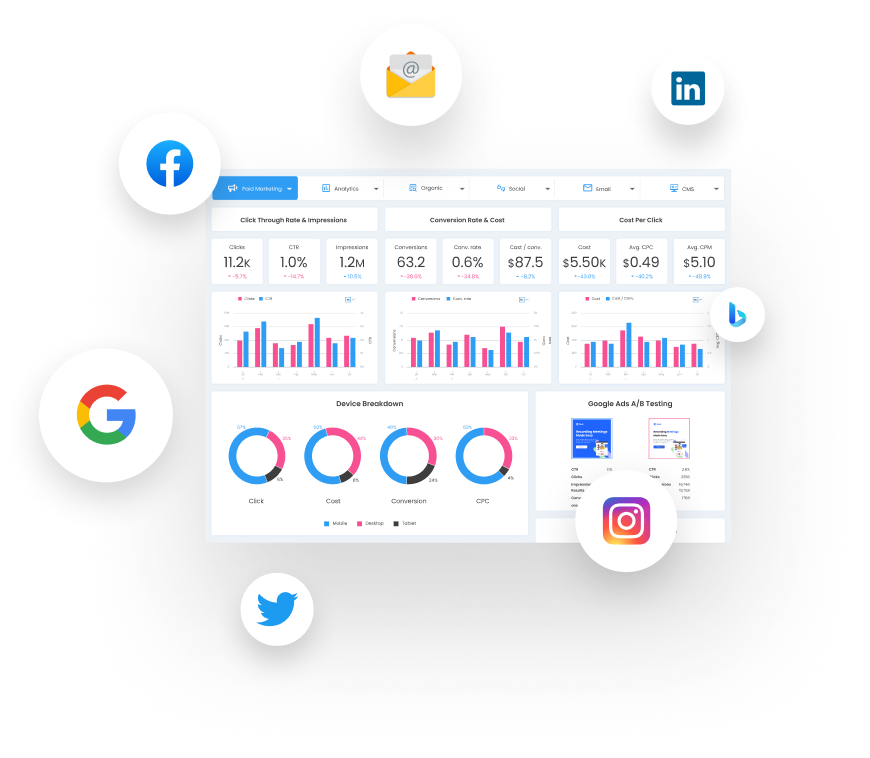
Integrating Diverse Data Sources
Xamtac excels in aggregating data from a wide array of sources, including Ads, Social Media, Analytics, CMS, CRMs, Email Metrics, and Organic Search Metrics. This comprehensive approach ensures that every aspect of your marketing ecosystem is accounted for, providing a 360-degree view of your campaign's performance.
Ads and Social Media Analytics
The platform offers in-depth analysis of ad performance across various platforms, helping you understand which campaigns are resonating with your audience. Similarly, social media analytics are crucial for gauging engagement, reach, and audience sentiment, enabling you to tailor your social media strategy for maximum impact.
Website Analytics and User Behavior
Xamtac provides powerful tools to analyze website traffic and user behavior. Understanding how users interact with your site – from page views to bounce rates – is essential for optimizing user experience and conversion rates.
Email Campaign Analysis
The platform also delves into email marketing metrics, providing insights into open rates, click-through rates, and subscriber engagement. This information is vital for refining your email strategy and ensuring that your messages are capturing the attention of your audience.
CRM Integration for Customer Insights
By using the Xamtac CRM or integrating with other CRM systems, Xamtac offers a deeper understanding of customer interactions and sales data. This integration is key for personalizing marketing efforts and building long-term customer relationships.
Organic Search Insights for SEO
The platform’s ability to analyze organic search metrics is crucial for SEO strategy.
Understanding how your content performs in search engine results can guide content creation and optimization efforts, ensuring higher visibility and reach.
Real-Time Insights for Agile Decision-Making
Perhaps the most impactful feature is Xamtac’s provision of real-time analytics. This allows marketers to make quick, informed decisions, adapting strategies in response to live data. Whether it’s adjusting a running campaign or responding to sudden market changes, real-time insights provide a significant competitive edge.
Predictive Analytics for Proactive Strategy
Beyond real-time analysis, Xamtac’s predictive analytics capabilities allow you to anticipate market trends and consumer behaviors. This foresight is invaluable for staying ahead of the curve, enabling you to strategize proactively rather than reactively.
Custom Reports and Visualization Tools
To make data analysis even more accessible, Xamtac includes custom reporting and data visualization tools. These features allow marketers to easily interpret complex data sets, transforming them into clear, actionable insights.
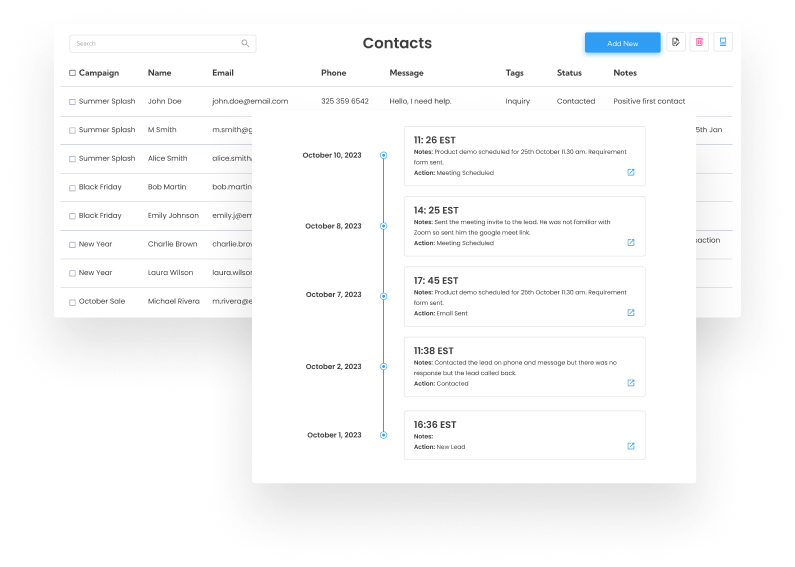
Building Stronger Connections: Xamtac’s Comprehensive CRM Approach
Xamtac's CRM capabilities are designed to foster deeper, more meaningful relationships with customers. It's not just a tool; it's a framework for nurturing customer loyalty and driving business growth.
Personalized Customer Engagement
At the heart of Xamtac's CRM is personalized customer engagement. The platform enables you to tailor interactions based on customer data, preferences, and past behaviors. This personalization can range from customized email communications to targeted offers and content recommendations. By delivering relevant and engaging experiences, Xamtac helps strengthen the bond between your brand and its customers.
Lead Management and Nurturing
Efficient lead management is crucial for conversion and growth. Xamtac’s CRM system provides sophisticated tools for tracking and nurturing leads through every stage of the sales funnel. From initial contact to post-sale follow-up, the platform ensures that potential customers are engaged with the right message at the right time. This systematic approach to lead management increases the likelihood of conversion and repeat business.
Segmentation for Targeted Marketing
Xamtac’s CRM allows for advanced segmentation of your customer base. By categorizing customers based on various criteria such as demographics, purchase history, and engagement levels, the platform enables you to craft targeted marketing campaigns that resonate with different segments. This segmentation leads to more effective and efficient marketing efforts, maximizing ROI.
Integration with Marketing Channels
The CRM system integrates seamlessly with other marketing channels within Xamtac. This integration ensures that customer insights are reflected across all marketing efforts, from email campaigns to social media strategies. Such a cohesive approach enhances the overall impact of your marketing initiatives.
Feedback and Analytics for Continuous Improvement
Xamtac’s CRM goes beyond managing customer interactions; it provides valuable feedback and analytics. By analyzing customer responses and behaviors, the platform helps you understand what works and what needs improvement. This continuous feedback loop is essential for refining your strategies and enhancing customer satisfaction.
Automated Workflows for Efficiency
The CRM system includes automated workflows to streamline customer relationship management processes. From automated responses to scheduled follow-ups, these workflows reduce manual effort and ensure timely engagement with customers.
Customer Journey Mapping for Better Understanding
Xamtac’s CRM tools enable you to map out the entire customer journey. This mapping provides insights into customer experiences at each touchpoint, helping you identify opportunities for improvement and personalization.
Retention Strategies and Loyalty Programs
Lastly, the platform aids in developing effective retention strategies and loyalty programs. By understanding customer behavior and preferences, Xamtac helps you create programs that incentivize repeat business and foster long-term loyalty.
Enhancing Team Synergy: Xamtac’s Suite of Collaboration Tools
Xamtac's collaboration suite is a cohesive blend of tools specifically designed to boost team productivity and enhance the synergy between different marketing functions.
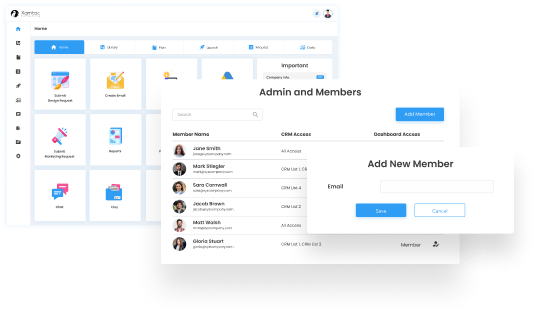
Comprehensive File Management
The platform offers a sophisticated file management system where all marketing materials are centrally stored and organized. This system allows for easy access, editing, and sharing of files, ensuring that every team member is on the same page.
Real-Time Chat for Seamless Communication
Integral to the suite is a real-time chat feature, enabling instant communication among team members. This tool fosters a collaborative environment where ideas are exchanged freely, questions are answered promptly, and updates are shared in real-time.
Task Management for Efficient Project Tracking
Task management is streamlined within Xamtac. The platform allows for the creation, assignment, and tracking of tasks, ensuring that every project component is progressing as planned. This feature is crucial for keeping the team focused and on track with their marketing objectives.
Notes for Idea Capture and Collaboration
Xamtac includes a notes feature for quick idea capture and collaboration. Whether it's brainstorming sessions, meeting takeaways, or spontaneous ideas, this tool ensures that valuable insights are recorded and accessible to the entire team.
Integrated Workflow Across the Platform
Perhaps the most significant aspect of Xamtac’s collaboration suite is how these tools integrate with the overall marketing platform. Files, chats, tasks, and notes are all linked with the broader marketing strategies, campaigns, and analytics. This integration ensures that collaboration is not only about communication but also about contributing effectively to the marketing goals.
Calendar Integration for Scheduling and Deadlines
The platform also includes calendar integration, enabling teams to schedule meetings, set deadlines, and plan campaign timelines. This feature helps in organizing the team's workload and ensuring that key milestones are met.
Customizable Dashboards for Personal Workflow
Each team member can customize their dashboard on Xamtac to suit their workflow. This personalization means that every marketer has the tools and information they need at their fingertips, enhancing individual productivity.
Document Collaboration for Co-Creation
The suite also offers document collaboration features, allowing multiple team members to work on a document simultaneously. This co-creation capability speeds up the content creation process and encourages a more cohesive approach to asset development.
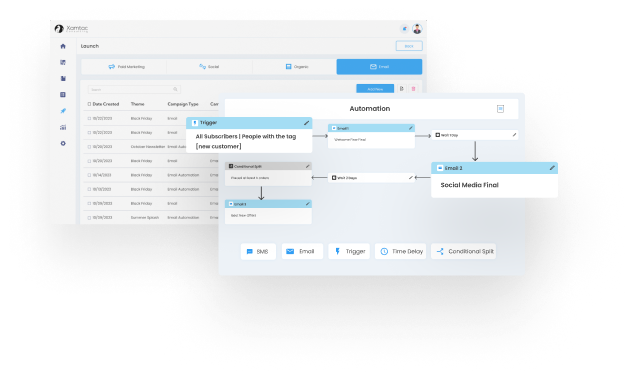
Optimizing Engagement: Xamtac’s Advanced Email and SMS Marketing Features
Xamtac's email and SMS marketing tools are engineered to maximize engagement and drive results, offering a sophisticated approach to reaching and connecting with your audience.
Automated Campaign Management
The platform offers robust automation tools for email and SMS campaigns. This feature allows you to schedule and send targeted messages efficiently, ensuring that your audience receives the right message at the right time. Automation extends to different types of campaigns, from promotional blasts to personalized customer journey communications.
Segmentation for Targeted Messaging
Xamtac excels in audience segmentation, enabling you to divide your audience into specific groups based on their behaviors, preferences, and engagement history. This segmentation ensures that each message is tailored to the recipient, increasing the relevance and effectiveness of your communications.
Personalization for Increased Engagement
Personalization is key in email and SMS marketing. Xamtac’s tools allow for the customization of messages based on individual customer data, leading to higher engagement rates. This personalization can range from using the recipient's name to tailoring the content based on past interactions or preferences.
Analytics and Performance Tracking
The platform provides comprehensive analytics for email and SMS campaigns, tracking metrics such as open rates, click-through rates, and conversion rates. This data is essential for understanding the effectiveness of your campaigns and making data-driven adjustments to improve performance.
A/B Testing for Optimized Content
Xamtac includes A/B testing capabilities, allowing you to test different versions of your emails and SMS messages to see which performs better. This feature is vital for refining your messaging and ensuring that your content resonates with your audience.
Responsive Design for All Devices
With the increasing use of mobile devices, Xamtac ensures that all email and SMS content is optimized for viewing on any device. This responsive design feature is crucial for maintaining a professional and accessible appearance across all platforms.
Template Library and Design Tools
The platform offers a rich library of email templates and design tools, making it easy to create visually appealing and effective emails. These templates are customizable, allowing you to align them with your brand’s style and messaging.
Compliance and Best Practices Guidance
Xamtac also provides guidance on compliance with email and SMS marketing regulations, ensuring that your campaigns adhere to legal standards and best practices. This feature is essential for maintaining the integrity and professionalism of your marketing efforts.
Plan and Launch Campaigns Mastering Multi-Channel Marketing: Xamtac’s Strategic Campaign Tools
Cross-Channel Planning
In today’s diverse digital landscape, effective marketing requires a robust cross-channel strategy. Xamtac empowers you with tools and insights to plan and execute campaigns across various channels - social media, email, web, and more. The platform provides a unified view, allowing you to harmonize your messaging and tactics across different mediums, ensuring consistency and maximizing reach.
Efficient Campaign Deployment
Speed and efficiency are crucial in campaign management. Xamtac streamlines the deployment process, enabling you to launch or schedule campaigns with ease. The platform’s intuitive interface ensures that setting up and executing campaigns is not only straightforward but also optimized for the best results. This efficiency allows your team to focus more on strategy and less on administrative tasks.
Custom Requests and Support Enhanced Marketing Expertise: Xamtac’s Professional Support System
Expert Assistance
Sometimes, specialized tasks require a higher level of expertise. Xamtac recognizes this need and provides access to professional help for these complex tasks. Whether you need advanced design work, specialized marketing strategies, or intricate development tasks, Xamtac connects you with the right experts to fulfill your specific requirements.
Ongoing Support
Xamtac is committed to providing continuous support for your marketing endeavors. The platform offers ongoing assistance, ensuring that you have the resources and guidance needed at every step of your marketing journey. This support ranges from technical help to strategic advice, ensuring that you are never alone in navigating the complexities of digital marketing.
Enterprise or Agency Solutions
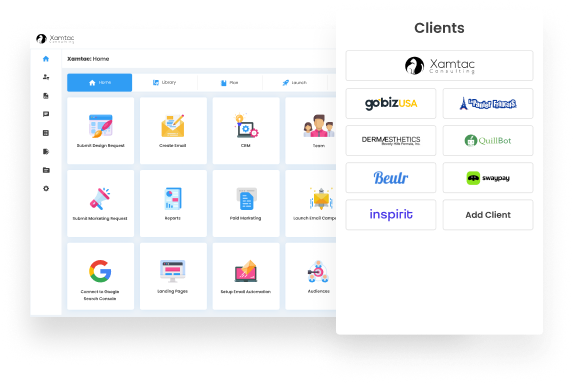
Scaling Success: Xamtac’s Solutions for Enterprises and Agencies
For enterprises and agencies, Xamtac offers tailored solutions designed to meet the demands of large-scale operations. The platform provides enhanced features for managing complex marketing strategies, large teams, and extensive campaigns.
Scalable and Customizable Solutions
Xamtac understands the unique challenges faced by enterprises and agencies. The platform is scalable, capable of handling large volumes of data, multiple campaigns, and a wide array of marketing channels. Additionally, the solution can be customized to fit specific operational needs and workflows.
Advanced Integration Capabilities
Enterprises and agencies often use a variety of tools and systems. Xamtac is built to integrate seamlessly with existing software and systems, ensuring a smooth and cohesive workflow. This integration capability is essential for maintaining efficiency and data consistency across different departments or client accounts.
Robust Analytics and Reporting
For high-level decision-making, Xamtac offers advanced analytics and reporting features. These tools provide deep insights into campaign performance, audience behavior, and ROI, essential for evaluating the effectiveness of large-scale marketing strategies.
Dedicated Support and Consultation
Recognizing the complex needs of enterprises and agencies, Xamtac provides dedicated support and consultation services. These services include specialized training, ongoing technical support, and strategic advice tailored to the unique challenges and objectives of larger organizations.
Xamtac truly is the ultimate AI-driven marketing ecosystem. It has helped many companies and it could also help scale your business. Try Xamtac today yourself by creating a free account.
Now lets dive into some more specific marketing tool types and examples.
Project Management Tools in Marketing Collaboration
In the complex and ever-evolving landscape of digital marketing, project management tools have become indispensable for orchestrating the myriad components that constitute successful marketing campaigns. These tools extend beyond the realm of basic task management, embodying strategic planning, team synchronization, and the efficient execution of marketing initiatives. They are the linchpins that ensure marketing projects are systematically organized, seamlessly aligned, and smoothly progressed from inception to fruition.
Tools like Asana, Monday.com, ClickUp, and Trello represent more than just software solutions; they are the catalysts that transform ideas into actionable plans. Each platform brings its unique set of strengths and functionalities, catering to the diverse needs of marketing teams. Whether it’s the detailed task allocation in Asana, the customizable workflows of Monday.com, the all-encompassing approach of ClickUp, or the intuitive simplicity of Trello, these project management tools are tailored to enhance productivity and foster a culture of transparency and accountability.
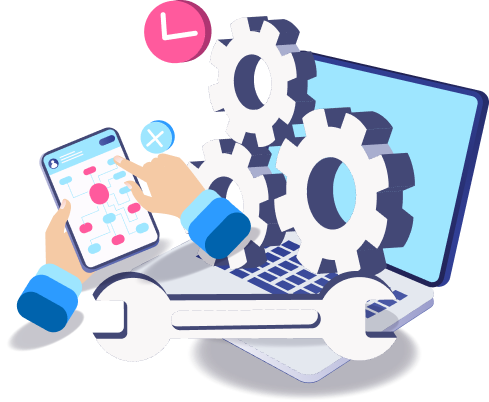
Asana, for instance, is celebrated for its user-friendly interface and visual project tracking, making it a favorite for teams that value clarity and straightforward task management. Monday.com, on the other hand, offers extensive customization, allowing teams to tailor the platform to their unique workflow needs. ClickUp stands out for its comprehensive feature set, offering a one-stop solution for various project management needs, while Trello’s card-based system offers unmatched simplicity and agility.
These project management tools also play a critical role in bridging communication gaps within teams, especially in remote or hybrid work environments. They facilitate real-time collaboration, ensuring that team members are constantly in sync and up-to-date with the latest developments in their projects. The ability to track deadlines, delegate tasks, and monitor progress in real-time transforms these tools into essential assets for any marketing team looking to optimize their workflows and enhance productivity.
In addition to their core functionalities, many of these tools integrate seamlessly with other marketing software, creating an interconnected ecosystem that streamlines various aspects of marketing operations. This integration capability is crucial in today’s marketing landscape, where the harmonization of different tools and platforms can significantly impact the efficiency and effectiveness of marketing campaigns.

Project management tools are not merely about managing tasks; they are about empowering marketing teams with the tools and capabilities needed to navigate the complexities of modern marketing. As we delve deeper into the specifics of these tools, we will explore how they contribute to the overall success of marketing initiatives and compare them to more integrated solutions like Xamtac, which brings advanced AI capabilities into the realm of marketing collaboration.
As we delve into the world of project management tools, it becomes clear that these platforms are vital in orchestrating complex marketing campaigns. Let's explore their impact on marketing collaboration in greater detail.
Task Organization and Workflow Management
These tools excel in breaking down large-scale marketing projects into manageable tasks, enabling teams to assign responsibilities and track progress effectively. This structured approach is critical in ensuring that every aspect of a campaign is accounted for and executed efficiently.
Real-time Collaboration and Communication
Project management tools like Asana and Monday.com provide platforms where team members can collaborate and communicate in real time. This feature is invaluable in maintaining team synchronization, especially in remote or geographically dispersed settings.
Integration with Other Marketing Tools
The ability to integrate with other software is a significant advantage of these tools. By connecting with CRM systems, analytics tools, and communication platforms, they create a cohesive ecosystem that enhances the overall efficiency of marketing operations.
Customization and Flexibility
Platforms like ClickUp and Trello offer a high degree of customization, allowing teams to tailor the tools to their specific project needs. This flexibility ensures that the tools are adaptable to various marketing strategies and campaigns.
Impact on Decision-Making and Strategy Development
The insights provided by these tools aid in strategic decision-making. By offering a clear view of project progress, resource allocation, and performance metrics, they enable marketing leaders to make informed decisions about strategy adjustments and resource optimization.
Project management tools are not just about managing tasks; they are about enabling marketing teams to work more cohesively, efficiently, and strategically. As we compare these tools to integrated solutions like Xamtac, it's evident that the choice of tool depends on the specific needs and dynamics of each marketing team.
Project Management Tools: Individual App Overviews and Pros & Cons
| Platform | Overview | Pros & Cons |
|---|---|---|
| Asana | Asana has positioned itself as a powerhouse in project management, particularly favored by marketing teams for its balance of functionality and user experience. It excels in breaking down complex projects into manageable tasks, making it easier for teams to track progress and meet deadlines. Asana's robust feature set includes setting priorities, assigning tasks to team members, and visualizing project timelines. Its ability to integrate with various other tools, like communication platforms and analytics tools, adds to its effectiveness in a marketing environment. | Pros:
|
| Monday.com | Monday.com is distinguished by its highly customizable nature, allowing marketing teams to create workflows that mirror their specific processes and preferences. The platform's vibrant interface is not just about aesthetics; it's designed for ease of use, enabling teams to track the progress of projects and individual tasks at a glance. Monday.com supports a wide range of project types, making it versatile for different marketing activities, from social media campaigns to large-scale marketing initiatives. Its integration capabilities further enhance its utility, allowing it to fit seamlessly into a diverse marketing tech stack. | Pros:
|
| ClickUp | ClickUp has emerged as a comprehensive solution that addresses multiple aspects of project management within a single platform. It's particularly well-suited for marketing teams that handle a variety of tasks and require a tool that can adapt to their diverse needs. ClickUp's feature-rich environment includes task management, document storage, goal setting, and even productivity tracking. This all-in-one approach means teams can centralize their work, reducing the need to switch between multiple tools. While its extensive features can be overwhelming, they offer the flexibility to customize the platform to each team's unique workflow. | Pros:
|
| Trello | Trello's simplicity and user-friendliness have made it a popular choice among marketing teams, especially those looking for a straightforward and effective tool for task management. Its card-based system is intuitive, allowing teams to organize tasks, track project progress, and collaborate in real-time. Trello is adaptable to a variety of project types, from small tasks to more extensive campaigns. Its flexibility is further enhanced by a range of add-ons and integrations, allowing teams to tailor the platform to their specific needs. Trello's approach makes project management accessible, even for those with little to no experience in such tools. | Pros:
|
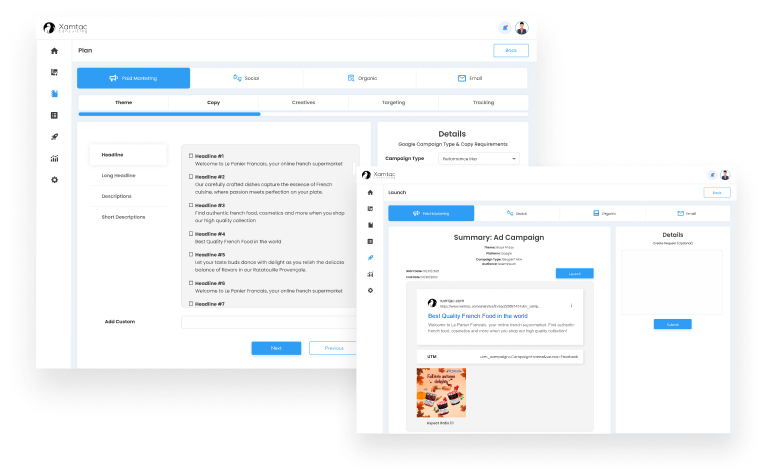
Xamtac as a Project Management Tool
Xamtac emerges as a distinctive contender in the project management arena, especially tailored for marketing, design, and development work. Unlike conventional project management tools, Xamtac integrates advanced AI capabilities, offering a more dynamic and data-driven approach to managing marketing campaigns. It enables teams to keep track of custom tasks while providing insightful analytics and automated suggestions, aligning perfectly with the needs of modern, data-centric marketing teams. Xamtac stands as a comprehensive solution, bridging the gap between project management, marketing intelligence, and creative workflow in a seamless, integrated manner.
Communication Tools for Marketing
In marketing, where strategies evolve rapidly and coordination is key, effective communication stands as a fundamental pillar of success. In this context, communication tools within marketing collaboration software emerge as essential instruments. They are intricately designed not just to facilitate clear and continuous dialogue but to also foster an environment where ideas flow freely and decisions are made swiftly and effectively.
These communication tools, distinct from project management tools, are focused specifically on enhancing the interaction dynamics within marketing teams. They are engineered to streamline conversations, enrich idea-sharing processes, and accelerate decision-making, making them indispensable in the fast-paced world of marketing.

Prominent among these tools is Slack, renowned for its comprehensive messaging capabilities, along with other significant players like Zoom, Discord, Microsoft Teams, and Google Chat. Each of these applications brings unique features and strengths to the table, addressing different facets of communication needs within marketing teams. From organized text channels and high-quality video conferencing to informal community-based discussions and integrated workplace communication, these tools cover a broad spectrum of functionalities.
As we delve deeper into the specifics of each tool, we aim to uncover how they individually and collectively enhance communication within marketing teams. We will also juxtapose their capabilities with comprehensive solutions like Xamtac, evaluating how these specialized tools compare with more integrated marketing collaboration platforms. This comparison will not only highlight the unique advantages of each tool but also provide insights into selecting the right communication tools for specific marketing needs.

Exploration of Communication Tools in Marketing Collaboration
The importance of communication tools in the realm of marketing collaboration cannot be overstated. These tools, each with its unique capabilities, significantly impact how marketing teams collaborate, share ideas, and make decisions.

Facilitating Clear and Continuous Dialogue
Tools like Slack and Microsoft Teams provide platforms for continuous and clear communication. They allow for the creation of dedicated channels for specific projects or topics, ensuring that conversations are organized and easily accessible. This continuous dialogue is crucial in maintaining the flow of information and ensuring that all team members are on the same page.
Enriching Idea-Sharing Processes
Platforms such as Discord and Zoom offer environments that are conducive to free-flowing idea exchange. Discord, with its informal setup, is excellent for brainstorming sessions, while Zoom’s video conferencing capabilities make it ideal for more formal meetings and presentations. These tools ensure that creative ideas are shared, discussed, and refined collaboratively.
Accelerating Decision-Making
In the fast-paced world of marketing, decisions often need to be made quickly and efficiently. Google Chat, integrated with other Google Workspace tools, enables swift decision-making by allowing team members to quickly discuss and vote on ideas or strategies, often in the context of shared documents or ongoing projects.
Enhancing Remote Collaboration
With the rise of remote work, these communication tools have become even more critical. They bridge geographical gaps, allowing teams to collaborate effectively regardless of their physical location. This aspect is particularly enhanced by video conferencing tools like Zoom and Microsoft Teams, which offer a face-to-face interaction experience.
Integrating with Marketing Workflows
The ability of these tools to integrate with other marketing software (like CRM systems, project management tools, etc.) creates a seamless workflow. For instance, Slack’s numerous integrations allow teams to receive updates from other platforms directly within the chat interface, keeping everyone informed and aligned.
Customization and Personalization
Many of these tools offer a high degree of customization, allowing teams to set up their communication platforms in a way that best suits their workflow and culture. This customization can range from simple interface changes to the integration of bots and automated workflows that enhance productivity.
Impact on Team Morale and Culture
Beyond their functional benefits, these communication tools play a vital role in shaping team culture. They can create a more inclusive and engaging work environment, contributing positively to team morale and collaboration spirit.
Communication tools in marketing collaboration are more than just platforms for exchanging messages; they are integral components that shape the dynamics of teamwork, idea development, and strategic execution in marketing. As we compare these tools with integrated solutions like Xamtac, it's clear that while specialized tools offer depth in their respective communication functions, platforms like Xamtac provide a more holistic approach, blending communication with other aspects of marketing collaboration.
Specific Communication Tools for Marketing
| Platform | Overview | Pros & Cons |
|---|---|---|
| Slack | As a trailblazer in modern workplace communication, Slack offers a dynamic and flexible platform for team interaction. Its channel-based messaging system allows for organized discussions, making it easy for marketing teams to segment conversations by project, topic, or team. Besides text messaging, Slack supports file sharing, voice and video calls, and has robust app integrations, making it a centralized hub for many teams. The platform's customizability, through various bots and integrations, enables teams to tailor their workspace to their specific needs, enhancing both communication and workflow efficiency. | Pros:
|
| Zoom | Zoom's rise to prominence, especially in the era of remote work, is attributed to its simplicity and reliability in video conferencing. It offers various features like screen sharing, virtual backgrounds, and breakout rooms, which are invaluable for conducting effective online meetings and collaborative sessions. Zoom’s ability to host a large number of participants with stable performance makes it ideal for webinars and large team meetings. Additionally, Zoom’s mobile app ensures that team members can stay connected even when away from their desks, providing flexibility in communication. | Pros:
|
| Discord | Discord has evolved from a gaming-centric platform to a versatile communication tool suitable for a range of communities and teams. It offers a unique blend of voice, video, and text communication, arranged in server-based channels that can be customized for different purposes. Discord’s informal, community-driven atmosphere encourages open and collaborative communication, making it suitable for creative brainstorming and informal team interactions. Additionally, its support for live streaming and screen sharing adds another layer of interaction, beneficial for collaborative projects and presentations. | Pros:
|
| Microsoft Teams | Microsoft Teams is a comprehensive collaboration tool that integrates deeply with the Microsoft Office suite. It offers chat, video conferencing, file storage, and application integration within a single platform. Teams' strength lies in its seamless connection with Microsoft’s ecosystem, allowing for effortless collaboration on documents, spreadsheets, and presentations. It's particularly effective for organizations that are already using Microsoft products, providing a unified experience across various tools. Teams also emphasize security and compliance, offering features suitable for businesses concerned with data privacy and regulatory requirements. | Pros:
|
| Google Chat | Google Chat, as a part of Google Workspace, offers a streamlined approach to team communication. It integrates closely with Gmail, Google Drive, and other Google services, making it a natural choice for teams already utilizing Google’s suite of tools. Chat excels in facilitating quick, informal conversations, and its deep integration with Google Workspace allows for easy sharing and collaboration on documents, spreadsheets, and presentations. This integration ensures that teams can work together seamlessly, with all their tools and documents accessible in a unified environment. | Pros:
|
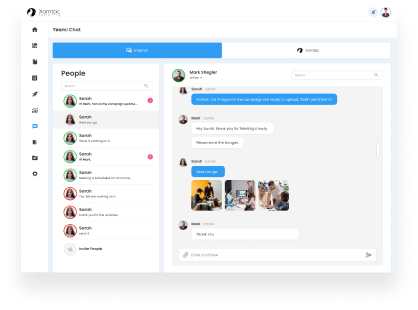
Xamtac as a Communication Tool
Xamtac differentiates itself in the communication tool space by blending advanced AI capabilities with comprehensive collaboration features. It provides a unified platform for messaging, AI-driven analytics, and task management, tailored specifically for marketing teams. Xamtac’s approach extends beyond standard communication; it is designed to enhance collaborative marketing efforts through data-driven insights and integrated workflows.

Data-Driven Marketing Collaboration Tools
In the ever-evolving landscape of digital marketing, the reliance on data-driven decision-making has become paramount. Here, metrics-based apps such as Super Metrics, Funnel.io, Triple Whale, and Google Analytics play an instrumental role. These tools are the linchpins in transforming raw data into actionable insights, crucial for strategizing and optimizing marketing campaigns.
Unlike traditional marketing tools, these data-centric platforms offer a deep dive into analytics, empowering marketing teams with the ability to track, analyze, and interpret vast amounts of data from various channels. They stand out for their ability to aggregate and visualize data, making complex information accessible and understandable. This not only enhances the decision-making process but also ensures that marketing strategies are agile, responsive, and aligned with real-world performance metrics.
From Super Metrics’ robust data integration capabilities to Funnel.io’s streamlined data funneling, Triple Whale’s e-commerce focused analytics, and Google Analytics' comprehensive web analytics, each tool offers unique features. They cater to the diverse needs of marketing professionals seeking to leverage data for a competitive edge.
As we delve into each of these tools, we aim to explore how they revolutionize marketing efforts through data-driven insights and how they compare with integrated marketing solutions like Xamtac. Understanding the strengths and applications of these tools will provide valuable guidance in navigating the data-driven aspects of modern marketing strategies.
| Platform | Overview | Pros & Cons |
|---|---|---|
| Super Metrics | Super Metrics stands out as a powerful data aggregation tool, designed to help marketers pull data from various sources into a single, cohesive platform. It specializes in collecting, analyzing, and visualizing data from marketing channels, ad platforms, and social media. With Super Metrics, marketing teams can create comprehensive dashboards that offer insights into campaign performance across multiple channels, making it easier to track ROI and make data-informed decisions. | Pros:
|
| Funnel.io | Funnel.io offers a streamlined approach to marketing data collection and analysis. It excels in funneling data from numerous marketing platforms and transforming it into actionable insights. This tool is particularly adept at automating data collection processes, thereby saving time and reducing the risk of human error. Funnel.io’s strength lies in its ability to simplify complex data sets, providing clear and concise reports that marketing teams can use to guide their strategies. | Pros:
|
| Triple Whale | Triple Whale is tailored for e-commerce marketing, offering specialized analytics that help businesses track and optimize their online sales. It provides a detailed view of e-commerce metrics, from customer acquisition costs to lifetime value and conversion rates. With its user-friendly interface, Triple Whale makes e-commerce data more accessible, enabling marketers to quickly identify trends and adjust strategies for maximum impact. | Pros:
|
| Google Analytics | Google Analytics is a ubiquitous tool in the world of digital marketing, known for its comprehensive web analytics capabilities. It provides in-depth insights into website traffic, user behavior, and conversion metrics. Google Analytics is essential for understanding how users interact with a website, which marketing efforts are driving traffic, and how to optimize for better engagement and conversion. Its integration with other Google services, like Google Ads, enhances its utility in creating a cohesive marketing strategy. | Pros:
|

Integrating Data for Informed Decision-Making and Effective Planning
Xamtac stands out in the landscape of marketing collaboration tools for its unique ability to connect seamlessly with a multitude of data sources, ensuring that every team member has a clear, comprehensive view of ongoing marketing activities. This integration is crucial in enabling informed decision-making across the team.
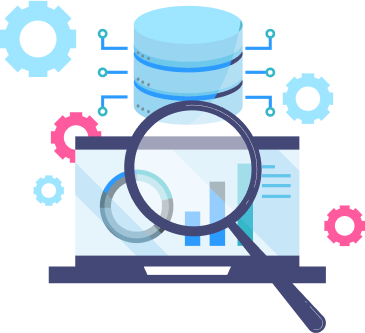
Data Integration and Visibility
At the core of Xamtac's functionality is its robust data integration capability. By connecting with various marketing platforms and channels, Xamtac collects and consolidates data into a centralized dashboard. This comprehensive view allows team members to monitor campaign performance, track key metrics, and understand user behaviors across different channels in real-time. This level of visibility ensures that everyone on the team, from strategists to executives, can see what's happening at a glance, facilitating informed decision-making and strategic adjustments.
Planning and Tracking Setup
Beyond data aggregation, Xamtac excels in the planning aspect of marketing campaigns. Its planning tools are designed to streamline the setup and tracking of marketing initiatives. Teams can set objectives, outline strategies, assign tasks, and establish timelines within the platform. This structured approach to planning ensures that campaigns are well-organized from the onset, with clear goals and measurable outcomes.
As campaigns roll out, Xamtac's tracking functionalities come into play. The platform allows teams to monitor progress against set objectives, providing real-time insights into what’s working and what’s not. This feedback loop is vital for agile marketing practices, enabling teams to pivot or optimize strategies based on data-driven insights.
The combination of Xamtac’s data integration and planning capabilities creates a powerful tool for marketing teams. It not only simplifies the complexity of managing multi-faceted marketing campaigns but also ensures that decisions are grounded in data. The ease of accessing and interpreting data, coupled with effective planning and tracking tools, positions Xamtac as an invaluable asset for teams striving for efficiency, accountability, and success in their marketing endeavors.
In essence, Xamtac's platform transforms the way marketing teams operate, moving them towards a more integrated, data-informed, and strategically aligned approach.
CRM Tools in Marketing Collaboration
In today’s data-driven marketing world, Customer Relationship Management (CRM) tools stand at the forefront, offering an indispensable resource for nurturing customer relationships and driving strategic marketing efforts. These tools go beyond mere data repositories; they are sophisticated platforms that empower businesses to not only collect and manage customer information but also derive actionable insights from it.
RM tools serve as the epicenter of customer data intelligence. They enable marketers to capture a myriad of customer interactions, from initial contact through various touchpoints such as sales interactions, customer service inquiries, and digital engagement. This comprehensive data collection allows for a deep understanding of customer journeys, helping businesses tailor their marketing messages and tactics more effectively.
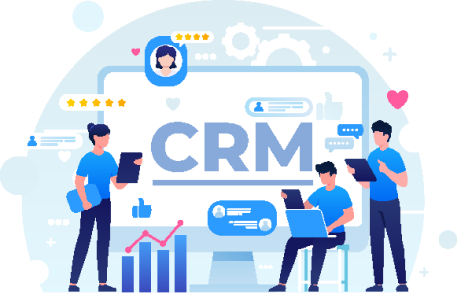
For example, a CRM tool can segment customers based on their purchasing behaviors, preferences, or engagement history, allowing for targeted marketing campaigns. Tools like Salesforce, HubSpot, and Zoho CRM offer advanced segmentation features, enabling marketers to craft personalized communications that resonate with each customer segment.
Moreover, CRM tools play a crucial role in lead management. They track potential customers from the point of lead generation, through nurturing processes, to the final conversion. This tracking helps in identifying the most effective marketing channels and strategies, optimizing the allocation of marketing resources.

The integration of CRM tools with other marketing technologies is another critical aspect. For instance, integrating a CRM with email marketing tools or social media platforms enables seamless synchronization of customer data across channels. This integration ensures consistent messaging and enhances the overall customer experience.
CRM tools also come equipped with analytics and reporting functionalities. These features provide invaluable insights into customer behavior patterns, campaign performance, and overall marketing effectiveness. With tools like Microsoft Dynamics CRM or Oracle CRM, marketers can access detailed reports and dashboards that aid in making data-driven decisions.

In essence, CRM tools are more than just databases for customer information; they are dynamic systems that support a wide range of marketing activities. From segmentation and personalization to lead management and analytics, CRM tools offer a wealth of functionalities that are crucial for modern marketing teams.
As we continue to explore the role of CRM tools in marketing collaboration, it’s clear that their impact extends far beyond customer data management. They are key to crafting a customer-centric marketing strategy that not only resonates with customers but also drives meaningful business outcomes.
| Platform | Overview | Pros & Cons |
|---|---|---|
| Salesforce | Salesforce is a leader in the CRM domain, known for its robust and versatile capabilities. It excels in customer data management, offering advanced analytics and a highly customizable environment. Its ability to integrate with numerous third-party applications makes it a flexible solution for various business needs. Salesforce is particularly adept at handling large-scale marketing operations, providing a range of tools for sales tracking, customer service, and marketing automation. Its platform is designed to cater to complex marketing strategies, offering deep insights into customer behaviors and preferences. | Pros:
|
| HubSpot | HubSpot is renowned for its user-friendly interface and comprehensive all-in-one marketing capabilities. It seamlessly integrates CRM with inbound marketing tools, such as email marketing, social media management, and content creation, making it an excellent choice for businesses seeking to align their CRM and marketing efforts. HubSpot is particularly favored by small to medium-sized businesses for its straightforward approach to CRM and marketing automation. | Pros:
|
| Zoho CRM | Zoho CRM stands out for its flexibility and affordability, making it a popular choice among small to medium-sized businesses. It covers essential CRM functionalities, including efficient lead and contact management, sales pipeline tracking, and performance analytics. The integration with other Zoho applications creates a cohesive ecosystem of business tools, enhancing overall productivity and user experience. | Pros:
|
| Microsoft Dynamics CRM | Microsoft Dynamics CRM is particularly effective for businesses deeply integrated into the Microsoft ecosystem. It offers a seamless user experience with robust analytics, comprehensive sales and marketing modules, and customizable dashboards. Its strengths lie in its ability to provide a cohesive CRM experience, particularly for enterprises that require a comprehensive, integrated approach to customer relationship management. | Pros:
|
| Oracle CRM | Oracle CRM is designed to meet the demands of large enterprises with intricate CRM requirements. It offers a comprehensive suite of features, including sales automation, customer service, and marketing tools, with an emphasis on data security and scalability. This platform is tailored for organizations that need a robust and secure system capable of handling complex customer relationship dynamics. | Pros:
|
The Xamtac CRM: Revolutionizing Customer Relationship Management
Innovative and Comprehensive Approach
The Xamtac CRM is a pioneering solution in the realm of customer relationship management, designed to bring a new level of efficiency and personalization to how businesses interact with their customers. At its core, Xamtac CRM is built on an AI-driven platform that intuitively adapts to a company's unique brand style, voice, and specific needs. This advanced technology enables businesses to not only manage customer interactions but also to deeply understand and predict customer needs and behaviors. It's more than just a tool for storing customer information; it's an intelligent system that analyzes and leverages data to create more meaningful and impactful customer relationships. The platform’s comprehensive nature ensures that it encompasses all the marketing features one could need, from lead tracking and engagement analytics to customer segmentation and targeted marketing campaigns.

Seamless Integration and Real-Time Analytics
One of the standout features of Xamtac CRM is its seamless integration capabilities. The platform is designed to work hand-in-hand with a wide range of marketing tools and channels, ensuring that all customer interactions, whether they happen on social media, through email campaigns, or in direct communications, are centrally tracked and managed. This integration is further enhanced by Xamtac’s robust API, which allows for custom connections with other business tools and systems, ensuring that the CRM can be tailored to fit any business process or requirement. Additionally, the real-time analytics provided by Xamtac CRM offer businesses the ability to make data-driven decisions quickly and accurately. This feature ensures that marketing strategies are always aligned with current market trends and customer preferences, allowing for agile adjustments and optimizations to marketing campaigns.

Tailored Marketing Strategies and Enhanced Customer Experiences
The Xamtac CRM is a pioneering solution in the realm of customer relationship management, designed to bring a new level of efficiency and personalization to how businesses interact with their customers. At its core, Xamtac CRM is built on an AI-driven platform that intuitively adapts to a company's unique brand style, voice, and specific needs. This advanced technology enables businesses to not only manage customer interactions but also to deeply understand and predict customer needs and behaviors. It's more than just a tool for storing customer information; it's an intelligent system that analyzes and leverages data to create more meaningful and impactful customer relationships. The platform’s comprehensive nature ensures that it encompasses all the marketing features one could need, from lead tracking and engagement analytics to customer segmentation and targeted marketing campaigns.

The CRM is a robust, intelligent, and versatile platform that stands at the forefront of modern customer relationship management. Its combination of AI-driven insights, seamless integration, and comprehensive marketing tools makes it an indispensable asset for any business looking to thrive in today’s competitive market.
AI Marketing Tools
In the realm of digital marketing, the advent of AI-driven tools like Jasper.AI and Copy AI represents a significant evolution in how marketing content is created and optimized. These tools harness the power of artificial intelligence to revolutionize content creation, making it more efficient, targeted, and impactful.
AI marketing tools are designed to automate and enhance various aspects of content creation. They use advanced algorithms and machine learning techniques to generate high-quality, engaging content that resonates with the intended audience. Tools like Jasper.AI and Copy AI excel in crafting compelling written material, from blog posts and social media content to ad copies and email campaigns. They analyze existing content trends, user preferences, and SEO best practices to produce content that not only attracts attention but also drives engagement and conversions.

Beyond content generation, these AI tools offer capabilities like sentiment analysis, language modeling, and automated content optimization. This means they can adapt the tone, style, and structure of the content to suit different platforms and audiences. The integration of these tools into the marketing workflow signifies a shift towards more data-driven, intelligent content strategies, where decisions are informed by insights derived from AI analysis.
Lets examine their role in content creation, their impact on marketing efficiency, and the advantages they offer in terms of scalability and personalization. The use of these tools reflects a broader trend in marketing towards leveraging technology to enhance creativity and effectiveness, marking a new era in digital marketing strategies.

AI Marketing Tools: Capabilities and Limitations
While AI marketing tools like Jasper.AI and Copy AI offer remarkable capabilities in content generation, it's important to recognize that they are not comprehensive solutions for all marketing needs. These tools excel in specific areas like creating and optimizing written content, but they don't address the entirety of marketing functions.
Focused on Content Creation
These AI tools are primarily designed for generating and enhancing textual content. While they significantly improve efficiency in this regard, they do not encompass other crucial aspects of marketing like strategy formulation, audience analysis, and multi-channel campaign management.
Lack of Holistic Marketing Perspective
AI tools may not fully grasp the broader context or the overarching marketing goals of a business. They operate largely on data and algorithms, which, while powerful, cannot entirely replace the nuanced understanding and strategic thinking that human marketers bring to the table.
Integration and Collaboration Limitations
Unlike more comprehensive marketing platforms, these AI tools may lack seamless integration with other marketing software. This can lead to challenges in incorporating AI-generated content into broader marketing workflows, especially in terms of collaboration and feedback within marketing teams.
While AI marketing tools like Jasper.AI and Copy AI are revolutionizing content creation with their efficiency and advanced capabilities, they should be viewed as part of a larger toolkit. Integrating these AI solutions with other marketing strategies and tools is essential for a well-rounded and effective marketing approach
Xamtac: A Holistic Approach to AI-Driven Marketing
Xamtac distinguishes itself in the marketing landscape by adopting a holistic approach that smartly leverages AI technology. Unlike tools focused solely on content generation, Xamtac integrates AI across various facets of marketing, offering a comprehensive suite of tools for strategizing, executing, and analyzing marketing campaigns.
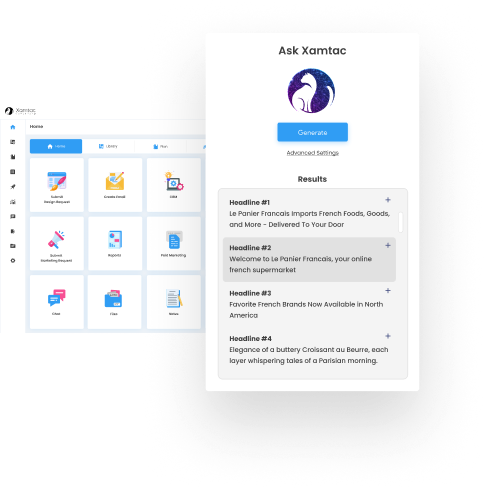
Strategic AI Integration
Xamtac uses AI not just for content creation but also for market analysis, consumer behavior insights, and predictive analytics. This broad application of AI empowers businesses to develop data-driven strategies that are more aligned with market dynamics and customer preferences.
Enhancing Customer Engagement
By analyzing customer data, Xamtac's AI algorithms help in segmenting audiences and personalizing marketing messages. This leads to more targeted campaigns, higher engagement rates, and improved customer experiences.
Optimizing Marketing Campaigns
Xamtac leverages AI for real-time campaign optimization. It continuously analyzes campaign performance data, providing recommendations for adjustments in tactics and strategies to maximize ROI.
Seamless Integration and Collaboration
Xamtac's platform integrates AI tools with other essential marketing functions, creating a cohesive workflow. This integration ensures that AI-driven insights are effectively incorporated into the overall marketing process, enhancing team collaboration and decision-making.
Xamtac's holistic approach, which smartly incorporates AI into various marketing functions, offers businesses a comprehensive solution that goes beyond content creation, embracing the full spectrum of marketing activities.
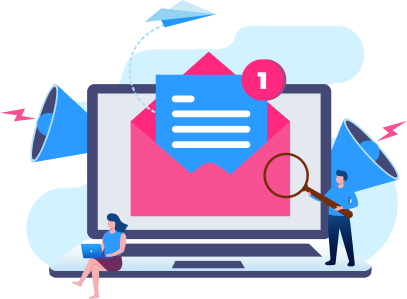
Email Marketing Tools
Email marketing, an integral component of contemporary digital marketing strategies, has evolved significantly with the advent of advanced tools like Mailchimp , Constant Contact, SendinBlue, and Klaviyo . These tools have redefined the realm of email communication, offering sophisticated features that cater to the dynamic needs of modern marketers.
These email marketing platforms stand out for their multifaceted capabilities. They not only facilitate the creation of visually appealing and compelling email content but also offer robust automation features. This automation extends from sending out timely newsletters to executing complex, trigger-based email sequences that respond to specific customer actions, such as browsing behavior or purchase history.

Furthermore, the power of these tools lies in their ability to segment audiences. Sophisticated segmentation allows for hyper-targeted email campaigns, ensuring that the right messages reach the right people at the right time. This level of personalization is key to enhancing customer engagement and loyalty.
Klaviyo, for instance, offers deep integration with e-commerce platforms, making it a go-to choice for online retailers looking to tailor their email marketing efforts based on customer purchase history and preferences. Similarly, platforms like Mailchimp provide a wide array of templates and design tools, enabling marketers to create emails that align with their brand identity and resonate with their audience.
Another significant aspect of these tools is their analytics and reporting capabilities. They provide detailed insights into email campaign performance, including open rates, click-through rates, and conversion metrics. This data is invaluable in understanding audience behavior, refining email strategies, and making data-driven decisions to optimize campaign performance.
In sum, email marketing tools have become indispensable for businesses seeking to capitalize on the power of email communication. They offer a blend of creativity, personalization, automation, and analytical prowess, empowering marketers to execute sophisticated, results-driven email campaigns. As we delve deeper into these tools, their functionalities, and their impact on marketing strategies, it becomes evident that they are key drivers in successful digital marketing endeavors.

Detailed Exploration of Email Marketing Tools and Their Impact on Marketing Collaboration
Email marketing tools play a pivotal role in the collaborative efforts of marketing teams, offering functionalities that significantly enhance campaign planning, execution, and analysis.
Campaign Planning and Strategy Development
These tools aid in strategizing email campaigns by providing templates, design tools, and content suggestions. Teams can collaborate on crafting the theme, content, and design of emails, ensuring that all elements align with the overall marketing strategy.
Audience Segmentation and Personalization
Advanced segmentation features allow marketing teams to tailor their messages to specific audience segments, increasing the relevance and effectiveness of email campaigns. This segmentation is based on various factors like demographics, purchase history, and engagement levels, enabling a more personalized approach.
Automation and Efficiency
Email marketing tools automate many aspects of email campaigns, from scheduling emails to sending trigger-based responses. This automation increases efficiency, allowing marketing teams to focus on more strategic tasks.
Performance Tracking and Analytics
Robust analytics features provide insights into the performance of email campaigns, including open rates, click-through rates, and conversion metrics. These insights are crucial for teams to assess the effectiveness of their campaigns and make data-driven decisions for future improvements.
Enhanced Collaboration
Many email marketing platforms offer collaborative features, such as shared workspaces, real-time editing, and feedback loops. These features facilitate better coordination among team members, ensuring that everyone contributes to and stays informed about the campaign's progress.
Email marketing tools are not just about sending emails; they are comprehensive platforms that enhance various aspects of marketing collaboration. From planning and personalization to automation and analytics, these tools empower marketing teams to execute more effective and efficient email marketing strategies.
Future of Marketing Collaboration Software

The AI-Driven Marketing Era
As we step into a new era of digital marketing, Artificial Intelligence (AI) stands as a transformative force, reshaping the landscape of marketing collaboration. At Xamtac Consulting, we are at the vanguard of this transformation, integrating advanced AI capabilities into our marketing collaboration software to offer an unprecedented level of efficiency and innovation.
AI: Redefining Marketing Collaboration
Predictive Analytics: Crafting Future-Ready Strategies
The incorporation of AI-driven predictive analytics into our marketing collaboration tools is a game-changer. By analyzing vast amounts of data from past campaigns and market trends, AI can accurately forecast future consumer behaviors and preferences. This capability enables marketing teams to anticipate market shifts and tailor their strategies accordingly, ensuring they are always a step ahead.
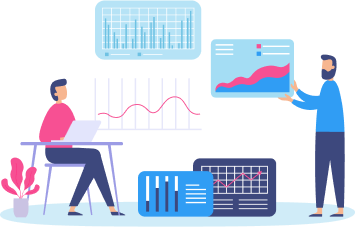
Enhanced Customer Insights through AI
AI technology in our collaborative marketing platform goes beyond basic analytics. It delves deep into customer data, uncovering nuanced insights about consumer preferences, behaviors, and engagement patterns. This level of understanding allows for highly targeted and effective marketing campaigns, significantly increasing the potential for customer engagement and conversion.

Automated Workflows: The Path to Elevated Productivity
Automation is at the heart of enhancing productivity within marketing collaboration platforms. AI excels in automating repetitive and time-consuming tasks, such as data entry, scheduling, and basic customer interactions. This automation frees up valuable time for marketing teams, allowing them to focus on more complex and creative aspects of their campaigns.
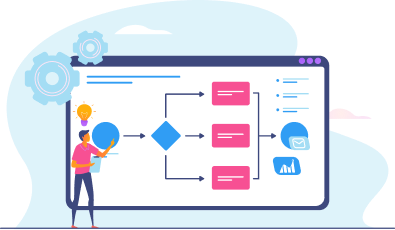
The Role of AI in Enhancing Team Collaboration

Facilitating Seamless Team Interactions
Future iterations of our marketing collaboration software will leverage AI to facilitate smoother team interactions. AI can help in scheduling meetings, managing project timelines, and even suggesting collaboration opportunities based on team members' skills and project requirements. This leads to a more cohesive and efficient teamwork environment.

AI-Driven Content Creation and Optimization
Content creation and optimization are crucial in digital marketing. AI tools integrated into our platform can assist in generating content ideas, optimizing for SEO, and even creating initial drafts of content. This AI assistance can significantly enhance the creativity and relevance of the content produced by marketing teams.
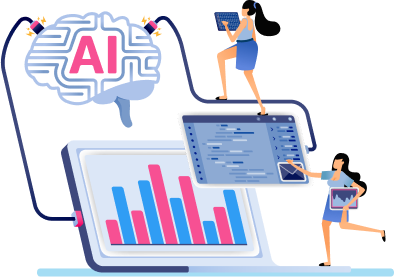
Real-Time Decision Making with AI Insights
The ability to make informed decisions swiftly is crucial in the fast-paced world of digital marketing. Our marketing collaboration tools equipped with AI provide real-time insights into campaign performance, market trends, and customer feedback. This immediacy enables marketing teams to make quick, data-driven decisions, adapting their strategies to the ever-changing market conditions.
AI and Personalization: A New Paradigm in Marketing
Dynamic Content Adaptation
AI in our platform can dynamically adapt content based on user interactions and preferences. This means that marketing campaigns can evolve in real time, resonating more effectively with the target audience. This dynamic adaptation ensures that marketing messages remain relevant and engaging, significantly improving the overall impact of marketing campaigns.

Predictive Customer Journey Mapping
By leveraging AI, our collaboration tools marketing team members use can predict and map customer journeys. This predictive mapping allows marketing teams to anticipate customer needs and preferences at different stages of their journey, enabling them to create more targeted and effective marketing strategies.

Integrating AI with Social Media and Email Marketing in Collaboration Software
Social Media Strategies Enhanced by AI
AI integration takes social media marketing tools to a new level. Our platform leverages AI to analyze social media trends, audience behaviors, and engagement patterns, enabling marketing teams to craft highly effective social media strategies. This integration allows for the optimization of posting times, content types, and audience targeting, ensuring maximum engagement and reach on social media platforms.

Email Marketing Revolutionized by AI Insights
Email marketing, a cornerstone of digital outreach, is significantly enhanced with AI. Our email marketing tools use AI to segment audiences, personalize messages, and optimize send times. This level of precision in email marketing leads to higher open rates, better engagement, and increased conversion, making every email campaign more impactful.

Real-Time Adaptation in Campaigns
The real-time adaptation capabilities of our marketing collaboration platform are a game-changer. AI algorithms can adjust marketing campaigns in real-time based on ongoing audience interactions and feedback. This responsiveness ensures that marketing strategies remain relevant and effective, adapting to the dynamic digital landscape.

Future-Proofing Marketing with AI-Driven Analytics and Reporting
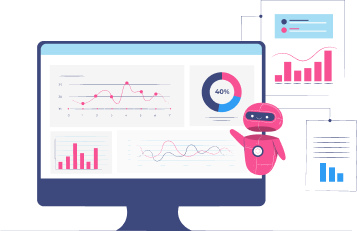
Advanced Analytics for In-Depth Insights
The future of marketing analytics tools lies in their ability to provide deeper, more actionable insights. Our AI-driven analytics delve beyond surface-level metrics, offering in-depth analysis of campaign performance, audience engagement, and ROI. These insights enable marketing teams to fine-tune their strategies for optimum performance.
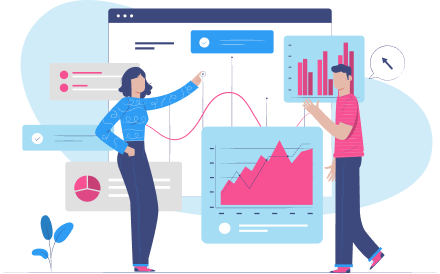
Customizable Reporting for Diverse Needs
Recognizing the diverse needs of marketing teams, our platform offers customizable reporting tools. These tools allow teams to create reports that align with their specific goals and metrics, providing them with the insights they need in the most efficient manner.

Predictive Reporting for Proactive Strategy Development
Moving beyond traditional reporting, our AI-infused platform offers predictive reporting. This feature forecasts future trends and outcomes, allowing marketing teams to proactively develop strategies that are aligned with anticipated market movements.
The Impact of AI on Collaboration in the Service Industry
Enhancing Service Delivery through AI
In the service industry, AI-driven marketing collaboration tools can significantly enhance service delivery. By analyzing customer data, AI can identify opportunities for service improvement and personalization, leading to higher customer satisfaction and loyalty.
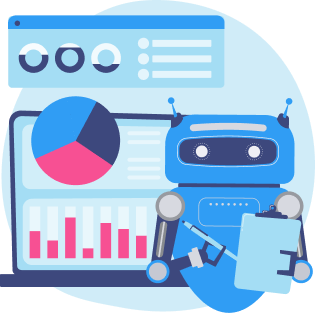
Streamlining Service Operations with AI
AI can streamline operations in the service industry, from scheduling appointments to managing customer queries. This efficiency not only improves the customer experience but also allows service providers to focus more on quality service delivery.

Data-Driven Service Innovations
The integration of AI in our collaboration tools enables service industries to leverage data for innovation. Insights gleaned from AI can guide the development of new services or the refinement of existing ones, ensuring that service offerings remain relevant and competitive.

Leading the Way with AI-Infused Marketing Collaboration
Our vision for the future of marketing collaboration is deeply intertwined with the advancements in AI. We are committed to staying at the forefront of this technological revolution, ensuring that our clients have access to the most advanced and efficient marketing collaboration tools available. As the digital landscape continues to evolve, our focus remains on empowering marketing teams to achieve unparalleled success through innovative, AI-driven solutions.

Harnessing AI for Cross-Functional Collaboration and Enhanced Creativity
Cross-Functional Team Synergy with AI
The future of effective marketing lies in cross-functional collaboration. Our AI tools for marketing foster synergy between different departments – from creative to analytics, to sales. AI facilitates seamless communication and information sharing across these teams, ensuring that every marketing initiative is well-coordinated and strategically aligned.

AI as a Catalyst for Creative Innovations
Creativity is the lifeblood of marketing, and AI acts as a catalyst in this domain. By handling routine tasks, AI frees up creative minds to focus on innovation and out-of-the-box thinking. Moreover, AI-generated insights can spark new ideas, leading to more inventive and impactful marketing campaigns.

Custom AI Solutions for Diverse Marketing Needs
Recognizing the unique challenges and goals of different marketing teams, our platform offers customizable AI solutions. Whether it's a specific analytic requirement or a unique workflow process, our AI-driven marketing collaboration software can be tailored to meet these diverse needs.
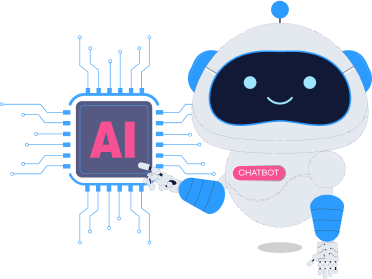
The Future Landscape of Marketing Collaboration: AI-Enhanced User Experience
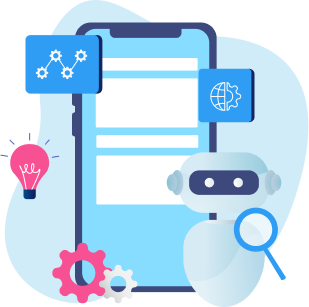
User Experience Redefined by AI
The user experience in our marketing collaboration platform is enhanced significantly by AI. From intuitive interfaces that adapt to user preferences to smart notifications that keep teams updated, AI makes the user experience smoother, more intuitive, and highly efficient.
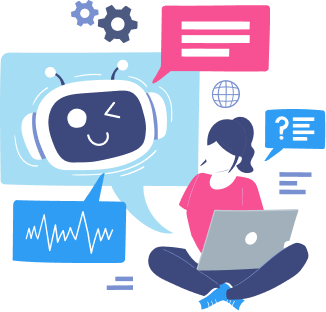
Voice and Natural Language Processing (NLP) Integration
The integration of voice recognition and NLP into our collaboration tools marks a significant advancement. These features enable users to interact with the platform using natural language, making the software more accessible and easier to use, especially for complex tasks.

AI-Driven Accessibility and Inclusivity
Our commitment to inclusivity is reflected in our AI-driven tools that cater to a diverse user base. Features such as language translation, accessibility options, and adaptive interfaces ensure that all team members, regardless of their background or abilities, can effectively collaborate and contribute.
Preparing for the Future: Adapting to Rapid Technological Changes in Marketing
Staying Ahead of the Curve
The digital marketing landscape is ever-changing, and staying ahead of these changes is crucial. Our marketing collaboration tools are designed to be adaptable and scalable, ensuring that they evolve with the latest technological advancements and market trends.
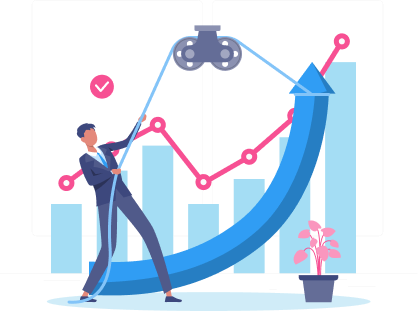
Continuous Learning and Development
To ensure our clients are always equipped with the latest in marketing technology, we offer continuous learning and development opportunities. This includes webinars, workshops, and online resources focused on the latest AI advancements and their applications in marketing.

Building a Community of Innovators
At Xamtac Consulting, we believe in the power of community. We encourage collaboration and knowledge sharing among our clients, creating a network of innovators who can share insights, challenges, and successes. This community approach fosters a culture of continuous improvement and collective growth in the field of AI-driven marketing.

Charting a New Course in Marketing Collaboration with Xamtac Consulting
The future of marketing collaboration at Xamtac Consulting is a journey of continuous innovation, driven by AI. By integrating advanced AI capabilities into our collaboration software, we are not just enhancing the efficiency and effectiveness of marketing teams but also redefining the landscape of digital marketing. Our commitment to staying at the forefront of technological advancements ensures that our clients are always equipped with the best tools to navigate the ever-evolving digital world and achieve unparalleled success in their marketing endeavors.
Frequently Asked Questions (FAQs)
To assist you further, we've compiled a list of frequently asked questions
What is Marketing Collaboration Software and How Does it Benefit Marketing Teams?
Marketing collaboration software is a digital platform designed to enhance cooperation and efficiency among marketing teams. It centralizes communication, project management, and resource sharing in one accessible space. This software facilitates seamless collaboration, allowing teams to share ideas, manage projects, and streamline marketing activities, regardless of their physical location. The primary benefits include improved project transparency, enhanced communication, reduced time spent on administrative tasks, better resource management, and the ability to track and measure marketing efforts in real-time. It's a solution particularly valuable in today's remote and hybrid work environments, fostering a cohesive working atmosphere even when team members are geographically dispersed.
How Do Marketing Collaboration Tools Streamline Project Management and Campaign Planning?
Marketing collaboration tools streamline project management and campaign planning by offering features like task assignment, deadline tracking, and real-time updates. They integrate various aspects of a project - from ideation to execution - within a single platform. This centralization simplifies the tracking of project progress, aligns team objectives, and ensures consistency in campaign messaging. Xamtac's platform, with its AI-driven capabilities for organizing and generating marketing assets, can be highlighted as an example of a tool that streamlines project management and campaign planning. These tools often come with calendar views, Gantt charts, and kanban boards, making it easier to visualize workflows and timelines. They also facilitate resource allocation, budget management, and risk assessment, ensuring that marketing campaigns are well-planned, executed on time, and deliver the intended outcomes
Are There Any Marketing Collaboration Tools Specifically Designed for Brainstorming and Ideation?
Yes, several marketing collaboration tools are specifically tailored for brainstorming and ideation. These tools, like Stormboard, Coggle, and Brainsparker, provide virtual whiteboards, mind mapping capabilities, and creativity prompts. They allow teams to visually organize ideas, create and share interactive diagrams, and generate new concepts through collaborative platforms. These applications support real-time collaboration, ensuring that team members can contribute, refine, and iterate on ideas no matter where they are located. This functionality is crucial for fostering creativity and innovation within marketing teams, as it allows for the seamless collection and development of diverse ideas and strategies.
What Are the Top Features to Look For in Marketing Collaboration Software?
When evaluating marketing collaboration software, look for features that enhance team efficiency and communication. Key features include:
- Task and Project Management: Tools for assigning tasks, setting deadlines, and tracking progress.
- Communication Channels: Integrated messaging and video conferencing for real-time communication.
- File Sharing and Management: Facilities for easy uploading, sharing, and organizing documents and creative assets.
- Real-Time Collaboration: Capabilities that allow multiple team members to work on a document or project simultaneously.
- Analytics and Reporting: Features that provide insights into project performance and team productivity.
- Integration Capabilities: Ability to integrate with other tools such as CRM, email platforms, and analytics tools.
User Access Controls: Options to set permissions and roles for team members.
- These features collectively ensure that the software meets the diverse needs of a marketing team, promoting efficient and effective collaboration.
Can Marketing Collaboration Software Assist in Managing Tight Deadlines and Budgets?
Marketing collaboration software is instrumental in managing tight deadlines and budgets. It provides tools for project scheduling, resource allocation, and deadline reminders, which help teams stay on track and avoid missing critical milestones. Budget management features allow for tracking expenses against allocated budgets, ensuring that marketing projects remain financially controlled. The software's real-time updates and notifications help teams quickly adapt to changes or delays, optimizing workflow and resource usage. By offering a clear overview of project timelines and financials, these tools enable marketing teams to deliver projects efficiently while adhering to strict deadlines and budget constraints.
How Can Marketing Collaboration Tools Improve Productivity and Teamwork?
Marketing collaboration tools significantly enhance productivity and teamwork by streamlining communication, centralizing information, and automating routine tasks. These tools facilitate seamless sharing of documents and ideas, ensuring all team members are on the same page. Features like task tracking and project timelines promote accountability and help in delegating tasks efficiently. Collaboration tools also offer platforms for brainstorming and feedback, fostering a more inclusive and creative work environment. By reducing the time spent on coordination and information searching, these tools free up time for strategic thinking and creative work, thus boosting overall productivity.
What Options Are Available for Small Businesses or Startups in Terms of Marketing Collaboration Tools?
Small businesses and startups have a variety of options when it comes to marketing collaboration tools, often requiring cost-effective and scalable solutions. As a versatile marketing tool, Xamtac might be suitable for small businesses or startups looking for AI-enhanced marketing collaboration solutions. Many tools offer free versions with basic features, such as Xamtac, Trello, Slack, and Asana. These provide essential functionalities like task management, communication channels, and document sharing, suitable for smaller teams. For businesses with specific needs, there are specialized tools like Hootsuite for social media management or Mailchimp for email marketing. The key for small businesses is to choose tools that offer the flexibility to scale as the business grows, without a significant initial investment.
Can These Tools Help in Tracking and Improving the Performance of Marketing Campaigns?
Marketing collaboration tools are instrumental in tracking and improving the performance of marketing campaigns. They provide features like real-time analytics, KPI tracking, and customizable dashboards, which give insights into campaign performance. Teams can monitor metrics like engagement rates, conversion rates, and ROI, allowing them to make data-driven decisions. These tools also facilitate A/B testing and feedback collection, which are crucial for optimizing campaign strategies. By providing a comprehensive view of campaign metrics and facilitating swift adjustments, these tools help in continuously refining and enhancing marketing efforts.
Are There Any Cloud-Based Marketing Collaboration Tools, and What Are Their Advantages?
There are numerous cloud-based marketing collaboration tools, which offer several advantages over traditional software. Cloud-based tools like Google Workspace, Salesforce, and HubSpot provide the flexibility of accessing data from anywhere, fostering collaboration among teams regardless of their location. They offer high scalability, adapting to the changing needs of a business without the need for significant hardware investments. Additionally, cloud-based tools ensure data security and offer regular updates with new features and improvements. Their integration capabilities with other cloud services enhance the overall efficiency and productivity of marketing teams.
How Do Marketing Collaboration Tools Support Remote or Distributed Marketing Teams?
Marketing collaboration tools are particularly beneficial for remote or distributed teams, as they bridge geographical distances and time zones. These tools provide a unified platform for communication, file sharing, and project management, ensuring that all team members are aligned and informed. Features like real-time collaboration, video conferencing, and instant messaging mimic in-office interactions, fostering a sense of connection and teamwork. They also enable flexible work hours, as team members can access project updates and resources anytime, from anywhere. By centralizing information and communication, these tools help remote teams to work efficiently and cohesively.
Can These Tools Help in Aligning Marketing Activities with Overall Business Goals?
Marketing collaboration tools play a crucial role in aligning marketing activities with overall business goals. They facilitate strategic planning by allowing teams to set and track specific marketing objectives that align with broader business aims. Features like shared dashboards, goal-setting functionalities, and progress tracking ensure everyone is focused on common objectives. These tools also foster cross-departmental collaboration, ensuring marketing efforts are in sync with sales, product development, and other key areas. By providing a clear view of how marketing initiatives contribute to business goals, these tools help in making more informed and strategic decisions.
Are There Any Free or Open-Source Marketing Collaboration Tools Available?
Yes, there are several free or open-source marketing collaboration tools available, catering to businesses with limited budgets. Tools like Xamtac, Bitrix24, Asana, and Trello offer free versions with essential functionalities like task management and communication. Open-source options like OpenProject and GanttProject are also available, providing customizable solutions for project planning and tracking. While these free tools may have limitations in terms of advanced features or scalability, they are often sufficient for small teams and basic collaboration needs. They offer an excellent starting point for businesses looking to improve collaboration without a significant investment.
How Do These Tools Assist in Managing and Distributing Digital Assets?
Marketing collaboration tools assist significantly in managing and distributing digital assets. They typically include features for storing, organizing, and sharing assets like images, videos, and documents. Tools with digital asset management (DAM) functionalities enable teams to categorize assets with tags, ensuring easy retrieval and reuse. Version control ensures the latest versions of assets are used, and permission settings control who can access and edit them. These tools also facilitate the distribution of assets across various channels and stakeholders, ensuring consistency in branding and messaging across marketing campaigns.
What Are the Analytics and Reporting Capabilities of Marketing Collaboration Software?
The analytics and reporting capabilities of marketing collaboration software are pivotal for measuring the effectiveness of marketing efforts. These tools provide data-driven insights into various aspects of marketing projects, including campaign performance, team productivity, and resource utilization. They offer customizable dashboards, real-time analytics, and automated reporting features, enabling teams to track KPIs and ROI effectively. With these capabilities, marketing teams can identify trends, measure success against goals, and make informed decisions to optimize strategies and improve outcomes.
How Do Marketing Collaboration Tools Facilitate Feedback and Review Processes?
Marketing collaboration tools streamline the feedback and review process by providing platforms for real-time communication and collaboration. Features like comment threads, document versioning, and approval workflows enable teams to review and give feedback efficiently. These tools often support integration with email and other communication channels, ensuring that feedback reaches the relevant team members promptly. By centralizing feedback and revisions, these tools reduce the likelihood of miscommunication and ensure that all stakeholders are aware of the latest updates and changes. This streamlined process helps in maintaining the quality and consistency of marketing outputs.
An AI Marketing Ecosystem for Strategies, Asset & Data Organization & Launching Campaigns Across Platforms
Xamtac is A marketing ecosystem that blends advanced AI with a suite of tools to increase efficiency. Tailored to your unique brand styles and voices, it streamlines multi-channel campaigns, enhancing reach & impact. Asset generation & organization capabilities allow for effortless creation & management of materials, while robust marketing planning & launch tools ensure strategic, coordinated campaigns. Integrate with your data for insightful analytics, & more for a comprehensive marketing team experience
